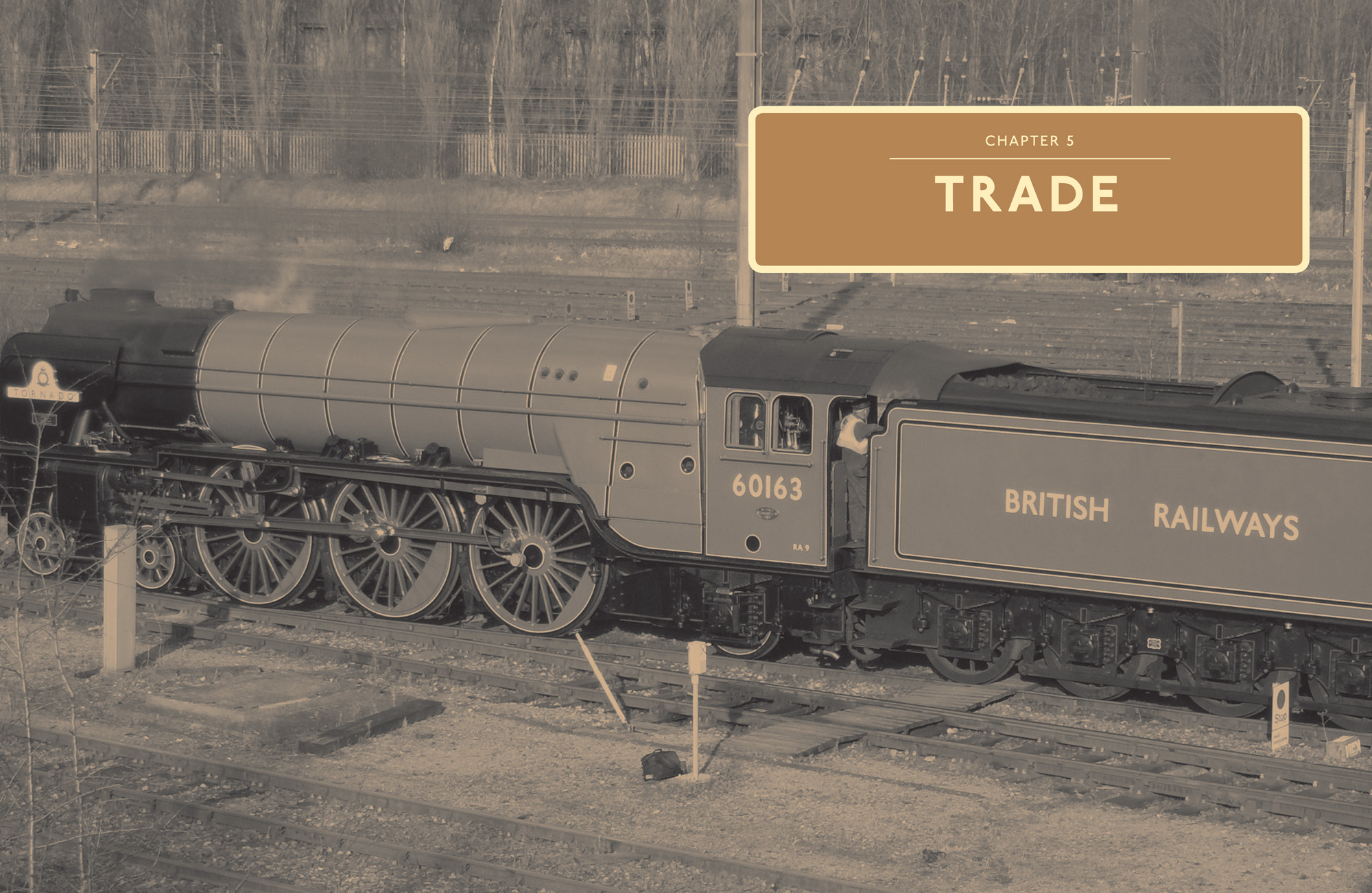
The railway network in Britain is a truly wonderful and remarkable achievement. The majority of the infrastructure that we use on a daily basis today was created in the nineteenth century and what exists now is only part of a much wider network that was in place during the golden age of the railways.
It is hard to imagine Britain without a rail network, but before it was built no one knew what it was going to look like. There were no committees, there was no initial policy drawn up. The railways in Britain were built by pioneers, visionaries – people who speculated that this new form of communication, of moving people and things from one place to another, would be the future. The steam railways were cutting-edge technology. They were invented and improved as they were being built and this factor had a huge impact on how they were formed.
Part of the reason why George Stephenson is cemented in railway history and is often seen as the founder of the modern railway is that he – above all others – could see their potential. Like very few other pioneers, he envisioned the railways criss-crossing Britain and connecting villages to towns to cities to ports.
At the time, there was a certain amount of opposition to rail travel – especially with regard to the anticipated speeds involved. In 1825, George Stephenson misled a parliamentary inquiry about the expected running speeds of his trains. There were fears of mental disorders being caused and air being sucked from passengers’ lungs if the trains went above the 12mph limit that Stephenson allowed the inquiry to believe his running speeds would be. In reality, he expected to reach speeds of 20mph. Although people travelling on galloping horses had not had the air sucked out of their lungs, perhaps one of the real reasons for the opposition was a fear of money being sucked out of the canal network in which many people and companies had invested.
As steam-powered railways proved themselves to be viable, more and more people clamoured to invest and multiple companies were set up. Some were successful, some were not, but in a period subsequently nicknamed ‘railway mania’, these companies built infrastructure and laid track, often in direct geographical competition with one another. Their aim was a return on investment, and that meant attracting trade, either in the form of passengers or goods.

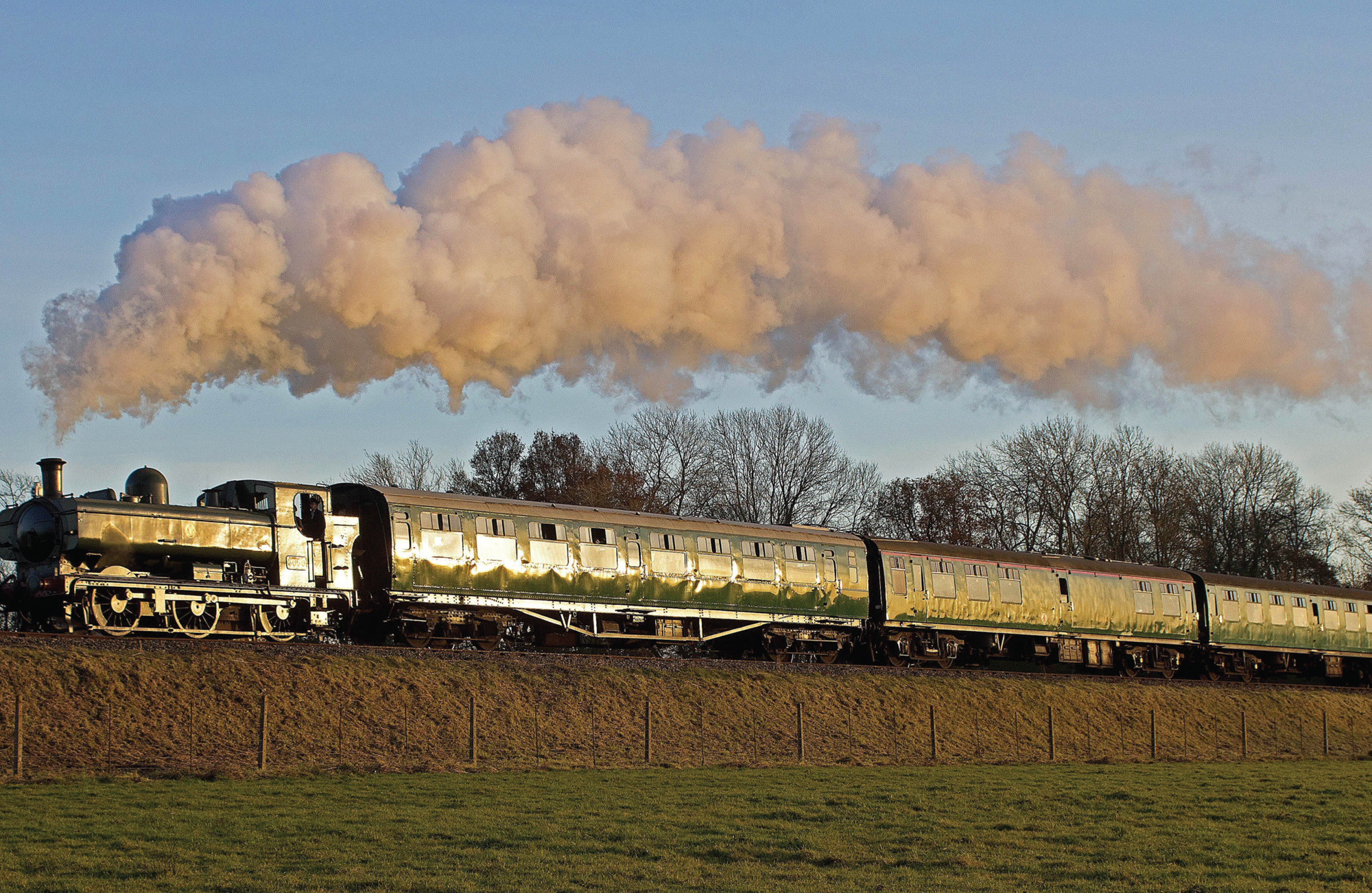
If a person or an item of cargo travelled from point A to point B on a single railway, there was no issue as to who received the money paid for the journey. However, if a journey incorporated more than one railway, then the division of revenue became a problem. In 1842, a number of railways collaborated with each other to form the ‘railway clearing house’. Based in a building near Euston station in London, the railway clearing house was a central point where all receipts and records for journeys could be collected, collated and then the fares shared out, based on mutually agreed criteria.
Much of the cause of railway mania was that Britain’s railways were constructed before the existence of a formal policy. The railway clearing house represents an early major step towards a unification and standardization of the railways. However, not all companies were involved in the project, the most notable absentees being the Great Western Railway and many railways to the south of London. The neutral ground replete with secretarial services meant that the companies that were involved could meet and discuss ideas and then informally create a roadmap for best practice.
Two elements that are well known to have been standardized by early British railways are time and track gauge. We are surrounded by clocks and, allowing for operational error, if they are all in the same global time zone, they will normally all display the same time. However, before the construction of the railways, time varied from place to place in the British Isles. In London alone there was a two-minute difference between the east and west of the city and across the country the variance was as much as fifteen minutes.
The travelling stagecoaches that predated the steam railways got round the problem by publishing the corrections needed by travellers for their timepieces en route. However, railways moved people across the country a lot faster, so the problem was literally more pressing. The Great Western Railway applied railway time in 1840 (see here), and over the next few years most railway companies willingly adopted it. However, there was a period of crossover, with many stations featuring clocks with two minute hands; one to show railway time, and the other to show local time.

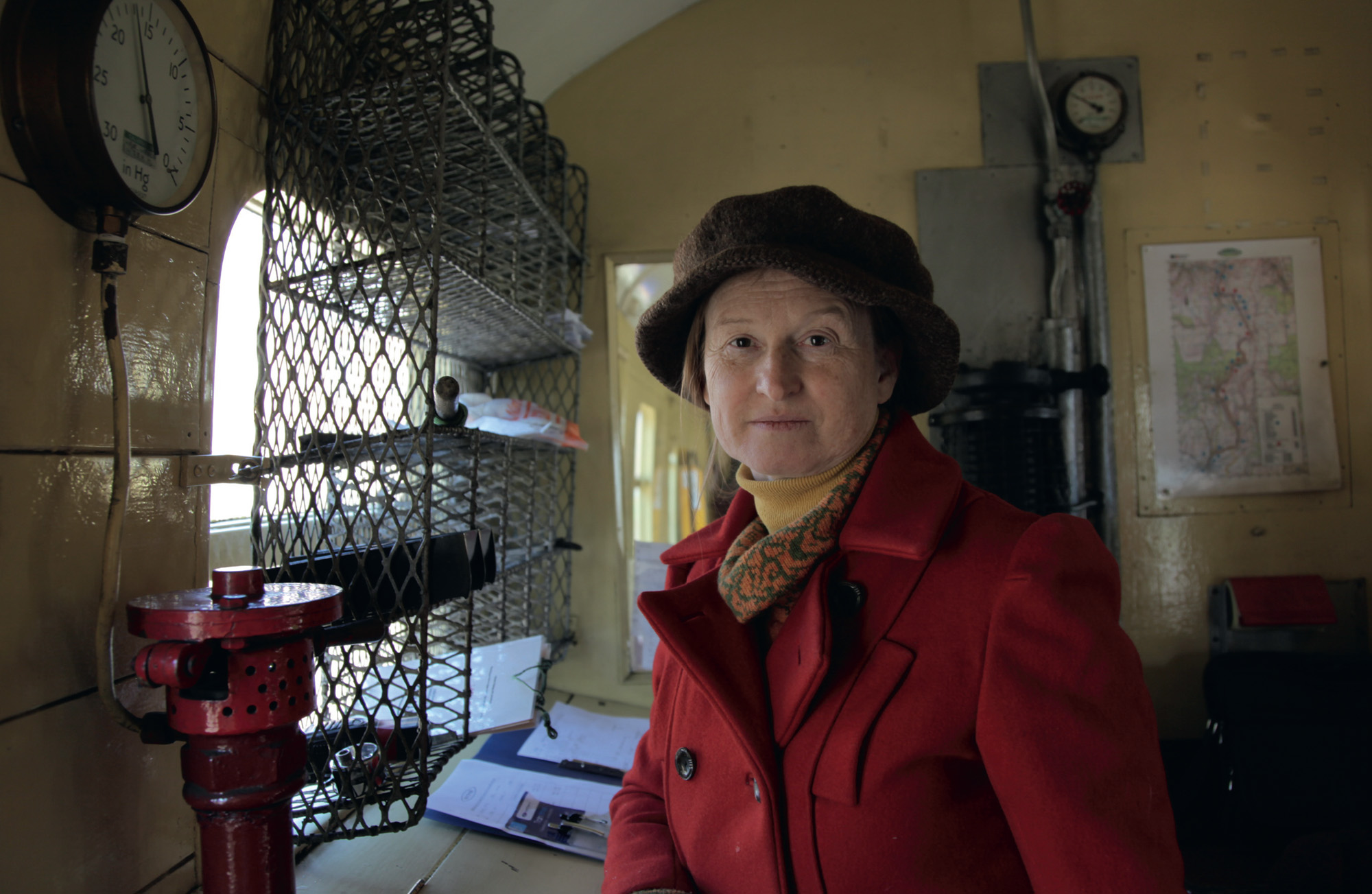
In 1847 the railway clearing house recommended that Greenwich Mean Time should be adopted as Railway Time, and almost all of the country operated on GMT by 1855. However, a legal case in Dorset in 1858 involving a land battle captured the public’s imagination, when a man from Carlisle was late for the hearing and the judge ruled against him. The man protested that he was on time according to his station clock. Confusions such as this were ended in 1880 by the Statutes (Definition of Time) Act, and GMT was officially adopted across the whole of Britain.

Track gauge was less of a problem than time, but in order for rolling stock to be moved safely and swiftly across the network of railways, there needed to be a single gauge. Gloucester station was a change of gauge station, where Brunel’s 7 feet ¼inch broad gauge (the ¼ inch was added later) met the 4 feet 8½ inch gauge that George Stephenson favoured. Although moving passengers and their assorted items of luggage from one train to another could be chaotic, shifting bulk items such as coal and small goods like coach bolts and beehives from one gauge truck to another was simply untenable.
A commission was set up by parliament, and trials of the existing gauges were undertaken. The broad gauge, which had better stability and lower costs per ton-mile, initially won hands down. However, the narrower gauge was cheaper and quicker to build – especially in the more undulating areas of Britain – so ultimately this was adopted. This came about in large part because of George Stephenson’s vision of a unified network of railways and the subsequent greater mileage of what was to become known as the standard gauge. Parliament passed the Gauge Act in 1846 and the last GWR broad gauge train ran in 1892.
GOODS
How goods and services were to be handled by the new railways was a matter of speculation. The trackways that had been laid were seen as similar to the canal waterways that had pioneered freight transport, and so the canal companies were used as inspiration for the new iron network. Canals had charged tolls, and the very first railways – such as the Surrey Iron Railway, established in 1801 – quickly followed suit.
Freight companies could use their own wagons and their own horses or locomotives and thus haul goods along a railway. This was the initial practice on the Stockton and Darlington railway, but in 1828 the Liverpool and Manchester railway was granted permission by parliament to act as a goods carrier in their own right. Once this precedent had been set, the railways all swiftly moved towards handling freight themselves.
The railway clearing house was instrumental in facilitating the movement of goods across the network of railways, and a decade after it was established the revenue generated from goods surpassed that of passenger travel in 1852. Goods carried by the railways then remained the primary source of income for the next 100 years. However, a problem that persisted to hinder the railways was their initial formation and goods handling policy.
The railways had standard rates of carriage, which had been controlled by the government since 1840. They were also obliged by law to take anything anyone wanted them to carry as long as it could fit within the loading gauge. The loading gauge is primarily the height and width of an object (length is also taken into consideration for cornering), to ensure that it will pass safely through tunnels and under bridges. Even if an object did not fit within a loading gauge, most often the railways would find a way of transporting it.
Furthermore, unlike continental Europe, where the rolling stock carrying goods was owned and operated by the rail companies, in Britain the railways had to accept privately owned wagons – unless they were badly constructed or were in a poor state of repair. Subsequently, many of the goods wagons that were operating on Britain’s railways were either owned by the companies that needed to ship the goods, such as the coalfields, or were rented from wagon hire companies. In the 1850s, the railway clearing house set technical standards for goods wagons and, along with guards vans, those wagons, although increasing in capacity, were a common sight on the railways.
To understand just how monumental the early initiatives of goods transportation were in shaping Britain’s railways, it is necessary to look at how the railways handled goods in the twentieth century. The 1960s introduced the concept of what would become the ‘freightliner system’, which moved goods via rail in shipping containers. It was also in the 1960s, as part of Dr Beeching’s generic cuts, that Merry-go-round freight trains were pioneered. These were freight trains that could load and unload on the move, hence the name, and usually carried large quantities of coal to fuel the ever-larger power stations being constructed in Great Britain. These two initiatives were to go on to effectively replace the Victorian goods practices that were still in common use. They would render obsolete the huge marshalling yards that had been built by the railways to handle the Victorian-style goods wagons.
Marshalling yards were primarily built after the Second World War and replaced multiple sites of sidings along the railway, so that the process of sorting goods wagons could take place in one location. If goods travelled on the railway in large and regular consignments – such as coal, fish or milk – the process of dealing with them was fairly straightforward. However, most goods travelling on the railway comprised of small, irregular loads, and it was these that needed thoroughly sorting.
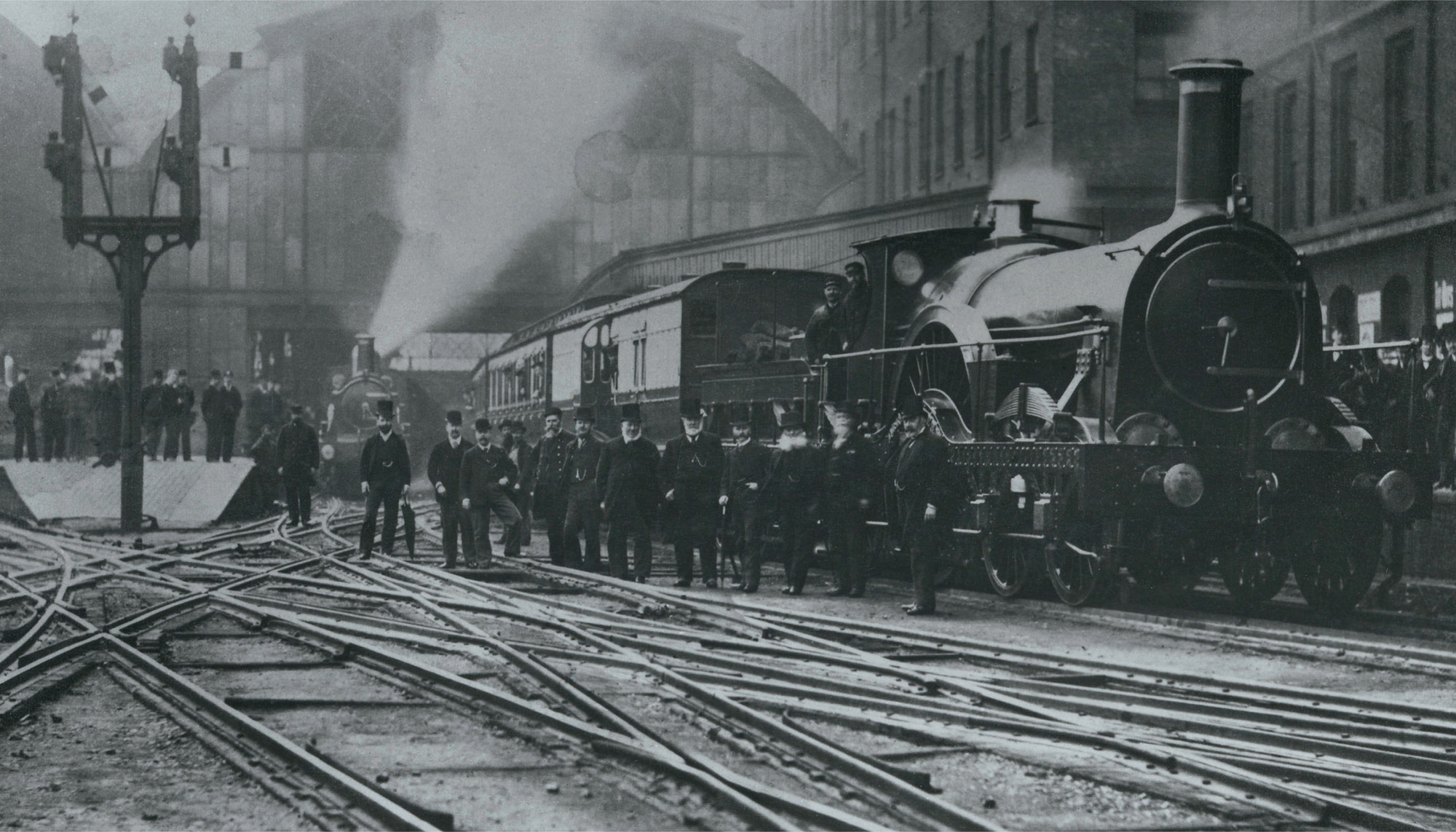
Goods trains arriving at a marshalling yard were divided into sections known as ‘cuts’, which could range from a single wagon to a chain of wagons. These cuts would then be regrouped into new trains for their onward journey. Some marshalling yards were built on flat ground, but many included an incline, known as a hump, to provide gravitational power. A train entering a marshalling yard under the power of a locomotive would be pushed to the incline. As it passed over the hump, the various cuts of wagons could be uncoupled and they would continue to roll freely down the hump and be funnelled through the points system into their respective sidings. This was known as ‘hump shunting’ and, as long as the goods being carried by the wagons were not fragile or abnormally sized, they could go over the hump.
WHERE IS STEAM NOW?

The concept of using steam as a source of power certainly dates back to the height of the Greco-Roman civilizations, if not earlier. However, the practical applications of steam did not become an industrialized reality in the nineteenth century. Steam took over the world, and changed the way we lived forever. Then, as quickly as it had arrived, it seemed to vanish. However, today our lives are still affected by steam power – not only by the legacy of the nineteenth century applications of steam such as the railways, but also by the new form of steam power that is harnessed today.
In the nineteenth century, the primary fuel that was used for generating steam was coal. Coal has a high calorific value and can produce immense amounts of heat. It can therefore release large amounts of energy. However, when coal is burnt in a fire, approximately seventy per cent of the energy goes up the chimney. The discovery of this fact led to the collection of these gases and their storage in large containers. These coal gases were known collectively in Britain as ‘town gas’ – which, unlike its successor natural gas, was highly poisonous.
Individual fires used for producing steam to create motion were inefficient. However, as Southern Railways and the London Underground soon discovered, centralizing the process in order to generate electricity – which could then be used to power both the trains and stations – would be a far better approach. During the twentieth century, a national grid system was created to deliver electricity across the nation. After the Second World War, as new houses were widely constructed once more, electricity took over from town gas as the favoured power source nationwide.
Much of the electricity that we use today, whether domestically or commercially, is generated by steam power. In power stations that use coal, the material is pulverized into dust in order to increase the efficiency of the burning process. The fire heats up water, which drives steam turbines, which in turn generate electricity. Although we may soon see the end of coal-powered generating stations due to the increased investment in renewables, we will not see the end of steam power.
Many large renewable solar energy stations and especially nuclear power plants all use steam power. It is also steam power that provides the propulsion of many of the world’s nuclear submarines and there are proposals to incorporate this technology into commercial vessels. Although the steam being generated is produced less and less by coal, it is those early pioneers of steam technology and those innovators on the railways who refined the use of steam that we have to thank for many of the developments that enabled the industry we know today. So, next time you switch on a light, think – it may just be generated by steam power….
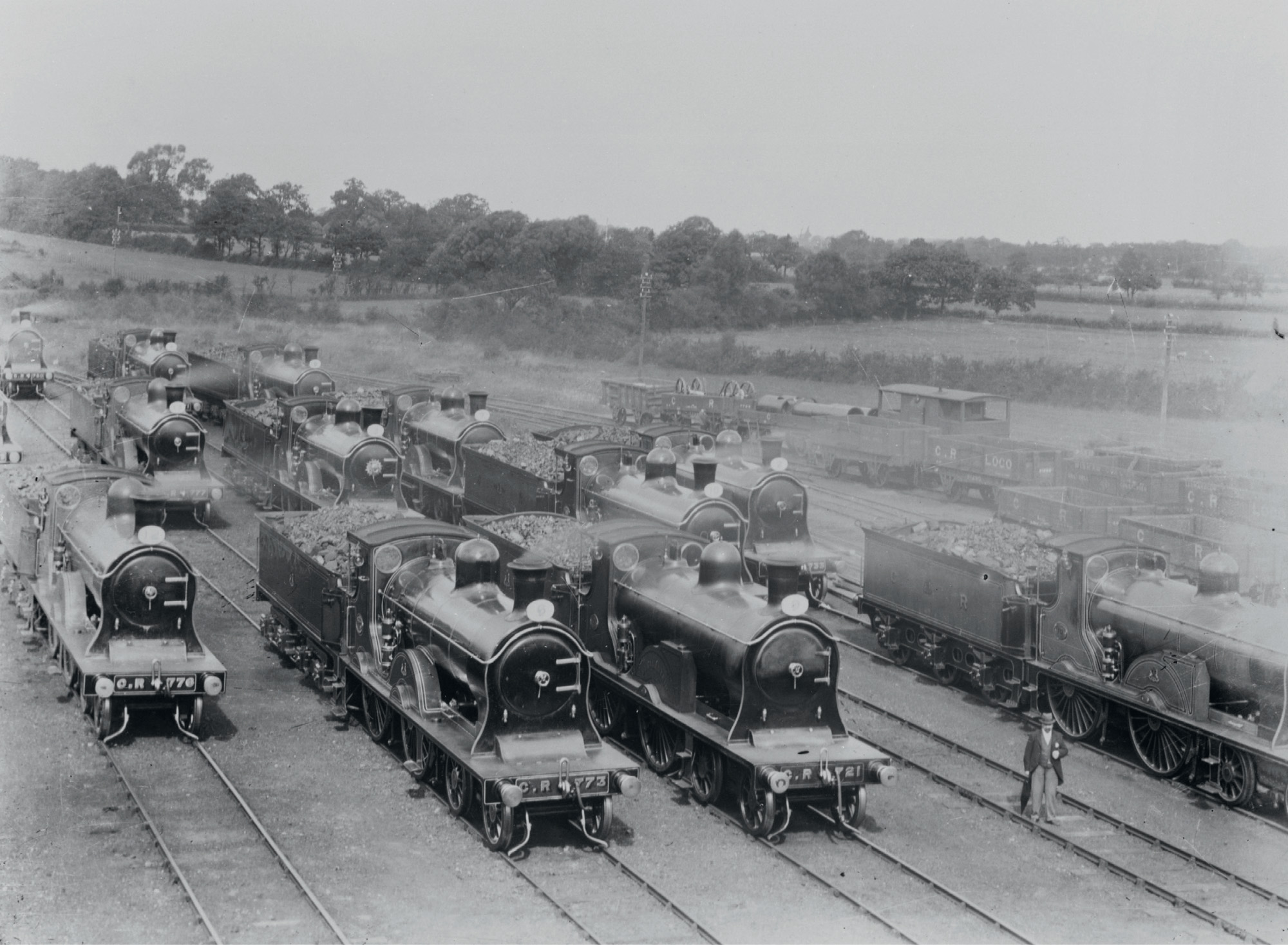
The use of humps to reduce the power required from engines was introduced as early as the 1880s. Wagons coming into a Victorian shunting yard were loose-coupled, allowing for fast uncoupling and coupling with a single ratchet hand break on one side which could be fixed in the stop position by the means of a pin. When the lever was in this position, the brakes were said to be ‘pinned on’. This was particularly useful, as the privately owned goods wagons often doubled as warehouse space, with goods sitting in a siding for months on end covered by a tarpaulin.
By the mid-1970s, of the 240,000 goods wagons in the national fleet passing through marshalling yards, over half still only had a hand brake to control them. Wagons going over a hump in a marshalling yard were subjected to the laws of physics. Their weight, the wind factor and how well their axles were greased all had an effect upon their motion as they travelled down hill. As they passed through points, there were mere moments between cuts, and often the single hand brakes on the wagons were on different sides, because the various wagons had individually been turned around on turntables before reaching the hump. Marshalling yards had automatic braking systems called ‘retarders’ that clamped the wheels of the goods wagons. Additionally, the points could be controlled from a tower overlooking the whole yard, but the dangers associated with shunting wagons that originated in the Victorian period were still very much in evidence.

When we think of death or injury associated with the railways, our minds usually gravitate towards occasional headline-grabbing train crashes or derailments. However, death and injury was a daily occupational hazard for the workers on the early railways. The death toll in Britain peaked in the mid-1870s, with an average of 700 railway employees dying each year. By 1906, the yearly death rate for goods guards whose duties included a lot of the shunting work was 2.7 people in every thousand. Moving on into the twentieth century, approximately one hundred shunters continued to be killed each year.
In America, automatic couplings were introduced in the 1880s, when federal law dictated a need for increased safety. In Britain between 1880 and 1900, the shunting pole was introduced. Consisting of an ash handle and a metal hook, the shunting pole was designed to ensure that a person uncoupling or coupling a train did not need to go in between wagons. However, the danger of loose-coupled wagons still existed. Such a wagon is connected to an engine or another wagon by means of a chain or hook. The couple is flexible, and the distance between two wagons coupled together will vary by as much as a foot as the train moves. As a locomotive powers away and the force generated acts on each wagon in turn, an observer can see this force move throughout the train as each couple is jolted.
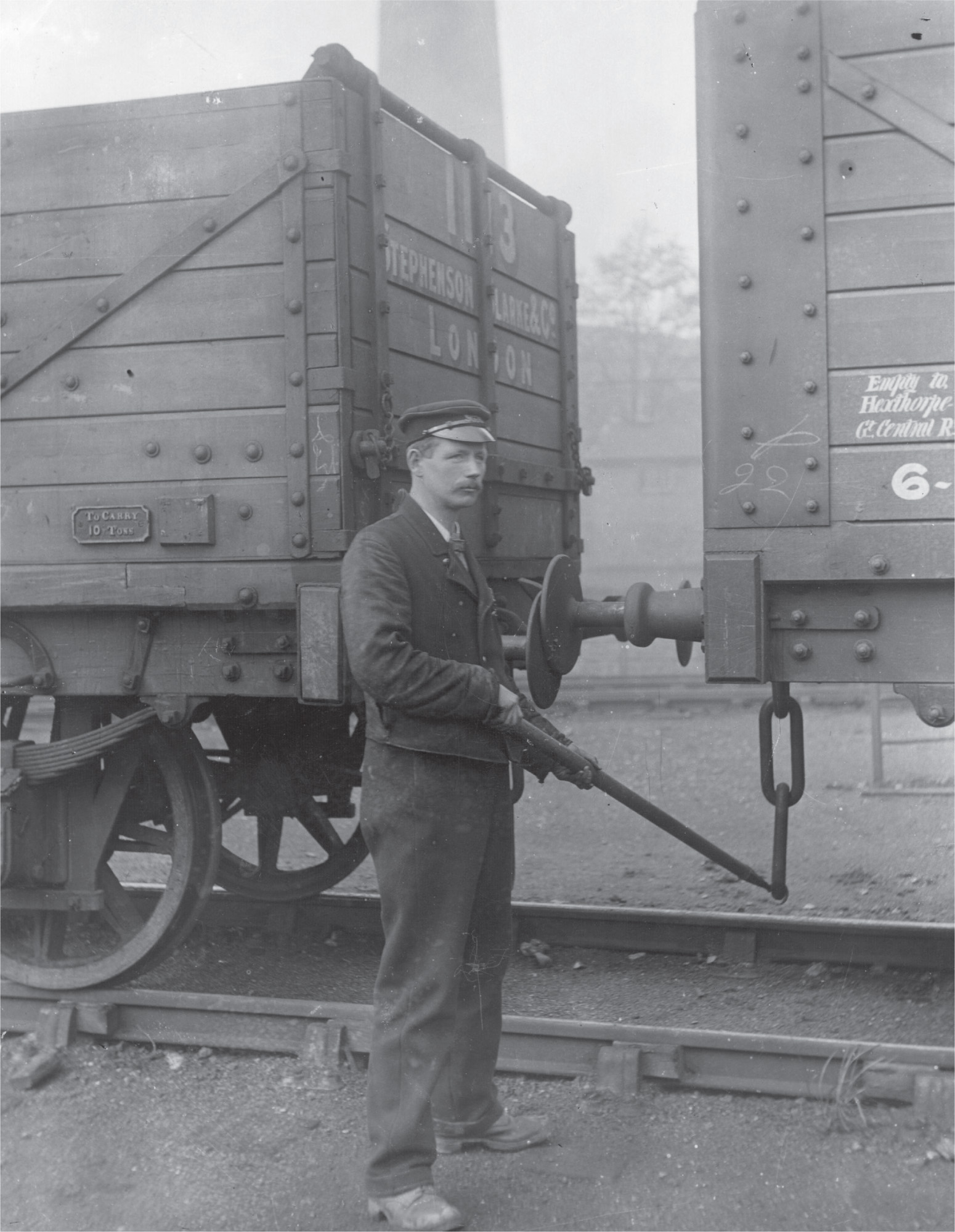

The use of the shunting pole facilitated an increase in ‘fly shunting’, which was the process of working the couplings while the train was still moving. Fly shunting was often used in conjunction with hump shunting, with cuts being uncoupled as they approached the top of the hump. One of the advantages of loose couplings was the speed at which they could be operated. Train companies introduced coupling competitions, in which shunters could compete to see who could be the fastest at uncoupling a train.
Prior to the introduction of the shunting pole, many of the deaths that occurred on the railways were due to people being caught between wagons. However, a lot of the fatal incidents – including after the poles were issued – were due to excessively long hours being worked, poor lighting and working on uneven ground. Shunting went on around the clock, and those working in the dark had a handheld lamp to illuminate their workspace. Not an easy thing to hold, while operating the pole on heavy chains at the end of a long shift during a cold, dark winter’s night...
It was not until 1953 that all staff on British railways received pension rights. Death would leave a family without an income, but so too could a serious injury. Loss of limb was commonplace, so much so that the LNER had a workshop at Crewe that produced artificial limbs and the GWR employed carpenters at their works in Swindon to produce wooden prosthetics. A serious accident could render a worker unfit for duty. Sometimes, victims could find work on other parts of the railway, but often they would need to seek employment elsewhere in an era well before the introduction of corporate liability. It is a shame that there were not more jobs such as that given to the engineer Bumper Harris, who had a wooden leg. He was employed to ride the first moving staircases installed on the tube network in 1911 at Earl’s Court station, in order to reassure other users of their safety.
As was the case in many other working environments that were born out of innovation and the industrial revolution, railway trade unions were formed in an attempt to battle for workers’ rights. The National Union of Railwaymen (NUR) was formed in 1913, when three existing unions amalgamated. It merged with the National Union of Seamen in 1990 to form the RMT (the National Union of Rail, Maritime and Transport Workers). The NUR represented drivers and firemen of locomotives, while the office workers that were involved with the railways had their own union.
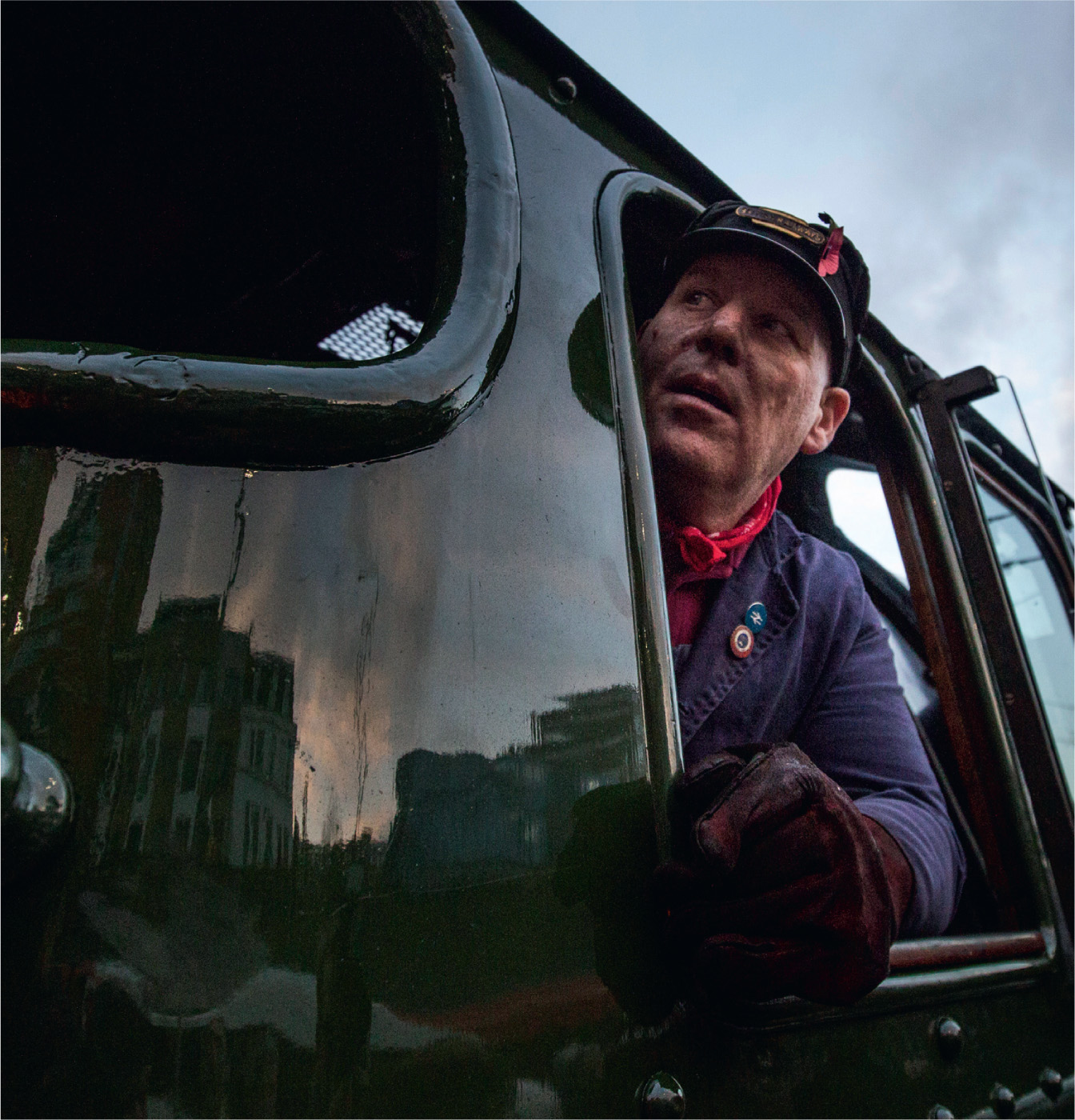
However, the majority of drivers and firemen chose to remain separate, and their union ASLE&F (Associated Society of Locomotive Engineers and Firemen), which was founded in 1880, is still going strong today. ASLEF, as it is now written, can be very much viewed as a craft union representing specific workers with specific skills. The division between ASLEF and other unions can very much be seen as demonstrative of the unique role that drivers and firemen played on the railways.
Many of the drivers of mainline locomotives were older in years. This was due to the recognized and structured career path that they took. Starting at a young age, the first job a person hoping to be an engine driver undertook was cleaning the locomotives. Engines had to be cleaned and oiled both inside and out, with ash and cinders being removed both from the ash pan under the firebox and from the smoke box at the front of the vehicle.

Boy cleaners also prepared the fires for the engines. Steam locomotives did not have keys. In order for an engine to be put into operation, it had to be heated up. For engines that were in regular service, train crews worked around the clock to ensure that the fabric of the machine did not cool down. Those that were being fired cold had to have their temperature raised gradually, as otherwise the thermal shock would begin to take its toll. It has been noted that as an A1 class locomotive is put into steam, it increases in size by as much as two inches.
Boy cleaners progressed to being junior firemen and then continued to work their way up. Firemen could gain their driver’s ticket and eventually they would graduate to the controls. Drivers moved up from shunting duties and station pilot locos to branch lines and eventually main lines. The final rung on the ladder was as an inspector. This path of entry to the craft that was driving a steam engine ensured a total knowledge. The very act of cleaning an engine meant that the boys setting out to become drivers knew the engines inside and out, knew what every part was, where it went and what it should look like in good working order. Drivers were not permitted to wear glasses, so the entry level cleaning jobs went to those boys who had good vision. Eyesight tends to fail later in life, and boys who had become steam train drivers but needed glasses due to eyesight deterioration remained as drivers, but were relegated to work such as shunting.
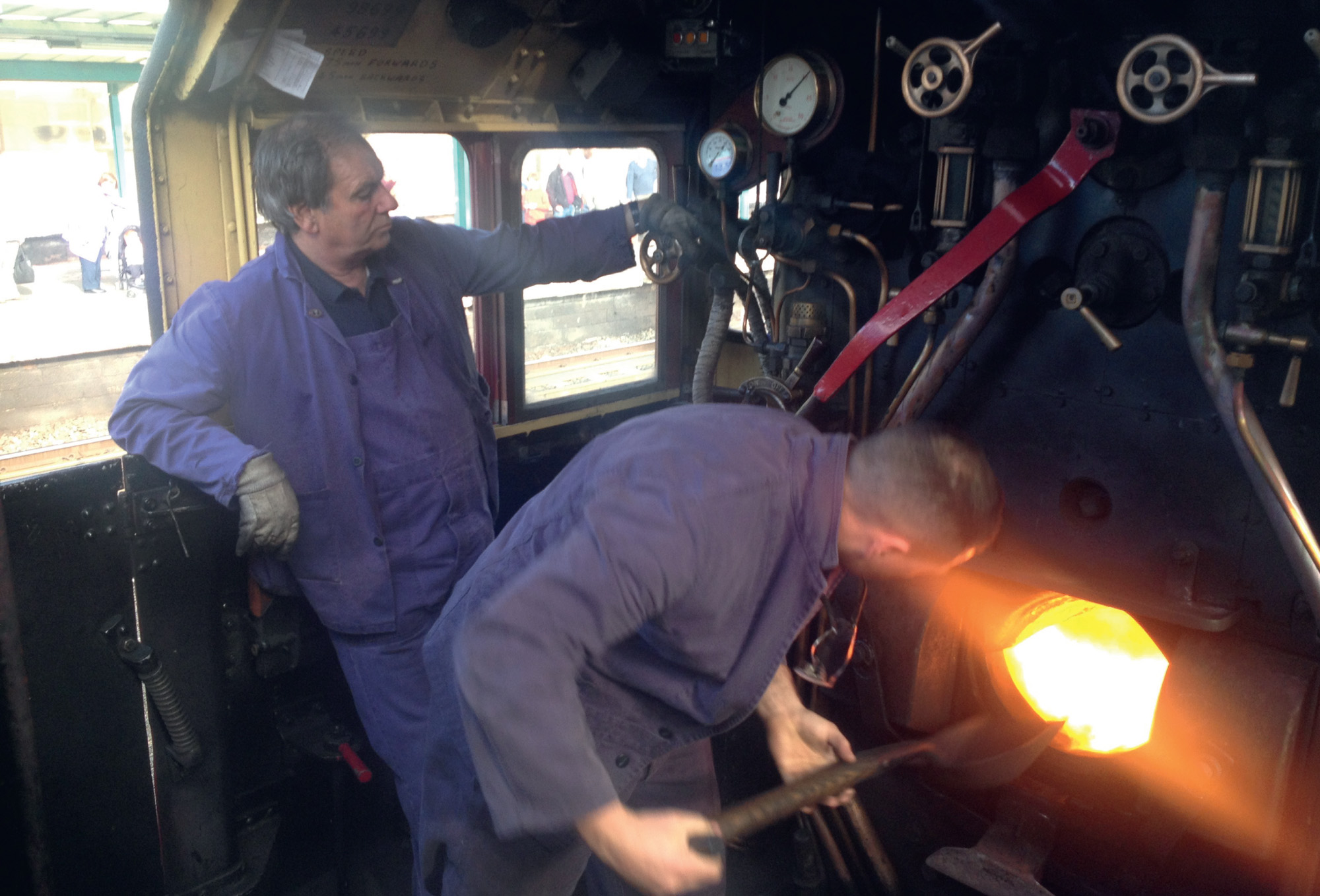
The age of steam created a love affair with many people who lived through it and many of those involved in it. Part of the reason for steam’s appeal is that each steam engine is different. The crews who worked and drove the locomotives knew this and they would come to know an engine’s temperament and foibles. As the years passed, improvements were made to the efficiency and performance of the machines, but sometimes it was only the engines’ crews who knew how to get the best out of the loco. One piece of unofficial kit that many firemen used was known as a ‘jimmy’ or a ‘razor’ or ‘spike’. Easily made by a blacksmith, it was a metal bar clamp with a safety chain that could be fitted over the blast pipe in the smoke box.
HOW DOES A STEAM ENGINE WORK?
A car has an internal combustion engine. The fuel that creates the power to make the car go is ignited inside the pistons in a series of tiny explosions. A steam engine is what is known as an external combustion engine. The fuel that gives the engine power is burnt away from where that energy is required. So, how does a steam engine work?
A steam engine will have a firebox. In here, the fuel will be burnt that creates the heat that will heat the water in the boiler to create the steam. Steam engines can burn wood, coal or oil, but in Britain coal was the main fuel used for steam locomotives. The firebox is connected to a smoke box. The smoke box acts as a baffle and stops the majority of red hot sparks and certainly larger cinders that might cause accidental fires from leaving the engine via the chimney. The smoke box also has a blower to create a draw when the engine first starts and to stop fire and smoke from entering the cab. Once the engine is underway, the blower can be stopped.
The hot gases that pass from the firebox to the smoke box do so via lots of small metal tubes. These tubes pass through the boiler and as they heat up they in turn heat the water up. The tubes have a large combined surface area heating the water. As the water reaches boiling point, it produces steam, which is collected in a dome on top of the engine. As steam technology advanced, many improvements were made. Steam is wet and there is a danger that when it touches something cold it will condense and turn back into water. To prevent this, most steam engines in the twentieth century were fitted with superheaters that heated the steam beyond boiling point and effectively dried it out.
Once the steam is produced, it travels through a steam pipe and into a valve that directs it into the pistons. The pistons are located at the front of the engine on each side and are connected to the large drive wheels by rods. The drive wheels also regulate the valves, so that when the piston reaches full extension the valve switches and directs steam to the other side of the piston and sends it the other way. The spent steam is routed through a blast pipe that goes into the firebox and is aimed up the chimney. This aids the draw of the chimney and gives a steam train its familiar chuffing sound.
In the cab of a steam engine there will be a fireman and a driver who will both know the route a steam train is taking. The fireman’s job is to keep the fire burning by shovelling more coal in. Steam engines, unless they are tank engines with water tanks on the side and a coal box on the back, pull a carriage known as a tender. The tender holds both water and coal. The coal compartment usually slopes downwards, channelling the coal towards the fireman and the water tank is located underneath. The fireman will always be thinking ahead. He will be increasing the fire when he knows the train has to work harder, and vice versa.
In the cab there will be two water tubes showing the level of water in the boiler. There are two tubes so that if one becomes blocked and gives a false reading, the crew have a back up. The tubes are encased in toughened glass and are backed by regular black and white diagonal stripes. These stripes appear horizontal when viewed through the water in the tube, so they allow for the level to be easily read. During travel, the water level is kept topped up to make the engine work as efficiently as possible. The cold water from the tender is added to the boiler via an injector valve. This valve temporarily increases the pressure of the water being added to overcome the high pressure in the boiler. It does this using cones. Steam passes through a cone (large end to small) which reduces its pressure but increases its velocity. This allows the cold water to be mixed in and then the combined steam and water passes through another cone (small end to larger), which decreases its velocity but increases its pressure.
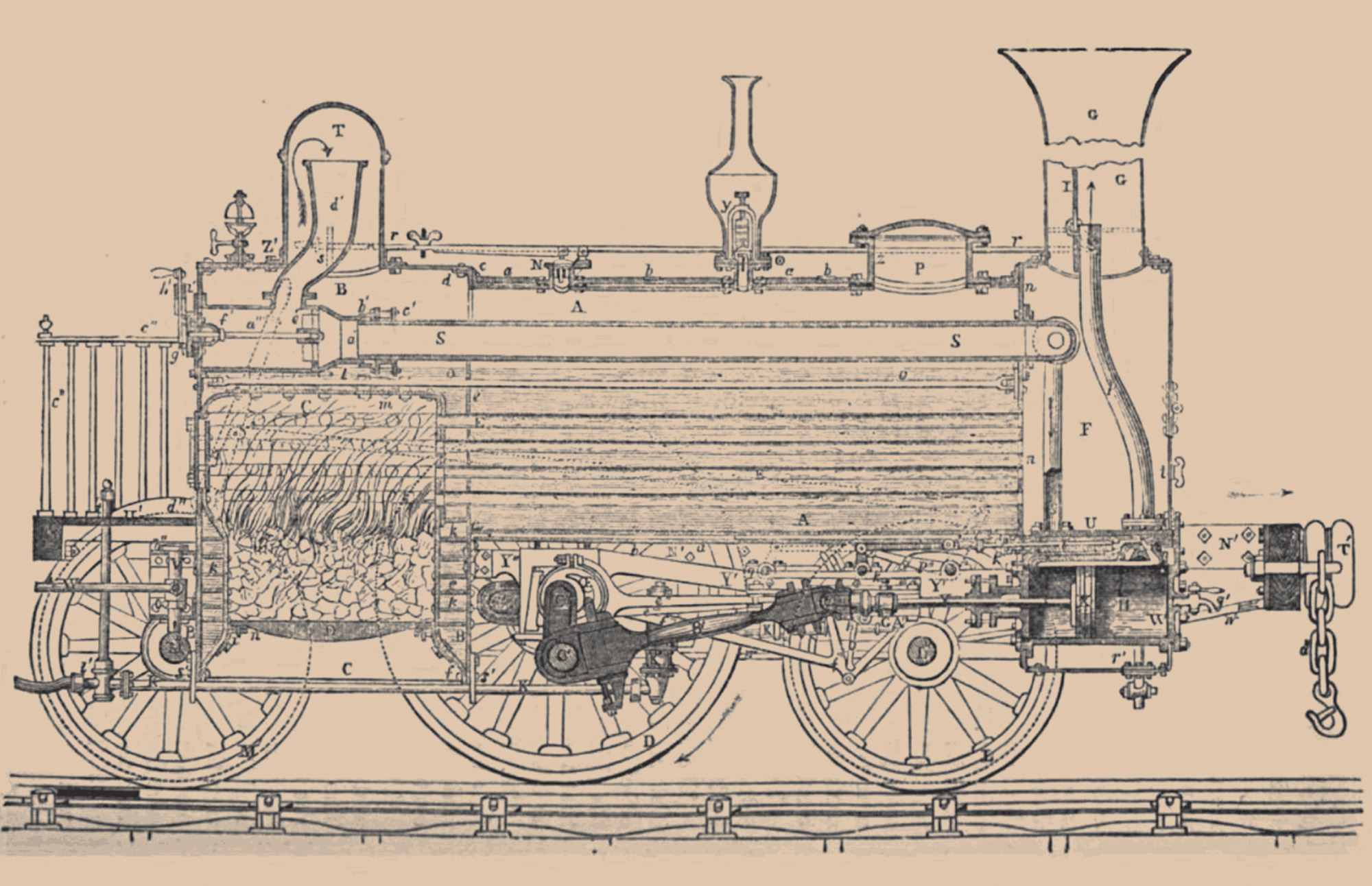
With the fire burning and the water fully topped up, the driver is ready to go. He will turn the reverser screw fully on so that the train goes in the correct direction, he will let off the brakes, sound the whistle and ease open the regulator. This will channel the steam into the pistons and begin to get the train moving. Train wheels and rails are both made out of steel and there is very little friction between them. The actual surface area of an engine’s wheels that touches the rails is tiny; however, their weight acting on this minute area creates enough grip to get the wheels going. Some engines have a dome, similar to their steam dome, that contains sand which can be dropped onto rails to assist traction in icy conditions.
Once the engine is underway, the reverser can be wound back. As the train gathers momentum it requires less power. The driver will know the track in the same way that a racing driver knows the twists and turns of a motorsport circuit. The driver will be able to increase or decrease the power required as the train travels along and the steam will always be there when needed because the fireman will have stoked the fire in advance.
It took many years to become a fireman or the driver of a steam engine. Everyone started at the bottom by cleaning and maintaining engines and worked their way up. Personally, having had the opportunity to drive steam engines, I say ‘where’s my rag, I’ve an engine to clean!’

The effect it had was similar to the later developments in blast pipe technology, such as the ‘Kylchap’ exhaust system. The bar split the blast steam from the cylinders and created a greater surface area to improve the draw on the fumes from the smoke box. Described as a ‘fireman’s lifesaver’, it would make the fire burn white hot and improve the performance of the engine. The ‘jimmy’ was used by firemen working for the Great Eastern Railway on their trains known as the ‘little black goods’.
First built in 1883, these simple 0-6-0 steam engines were numerous on the GER and later the LNER. 127 of them made it to British Rail service, with the last of the ‘little black goods’ being withdrawn from service in 1962. Their main duties were pulling freight trains, but they also saw service in France and Belgium during the First World War and were used to haul secondary passenger trains. Their longevity was due to their simple design, but they had small engine boilers, which was the reason why the firemen resorted to the ‘jimmy’ to help raise steam to make sure that the engines managed to run on time with heavy loads.
The lives of the firemen and drivers who moved trains of goods and passengers around the railways were not without incident. In particular, firemen faced danger in the same manner as shunters, as they often had to climb down and under the engines. However, many of the incidents that engine crews had to contend with were more dramatic than the daily shunting accidents.
A locomotive moves at considerable speed and operates by superheating steam and forcing it out of the engine under incredible pressure. If things go wrong with the steam engine, it can often be with a bang. The metal parts of the engine, especially those exposed to excessive heat, can degrade over time. If they fail, it can have a catastrophic effect. Constant inspection and regular servicing can prevent this. However, a common cause for a boiler explosion is a lack of water in the engine covering the crown plate of the firebox. Steam engines need to be constantly topped up with water, either from the tender they pull or, in the case of a tank engine, from the water tanks on their sides.
In the cab of a locomotive there are commonly two water gauges, so that if one becomes clogged and gives a false reading, the other will act as a back up. During the Second World War, 400 United States Army Transportation Corps S160 Class locomotives were deployed to handle the increased amount of freight that had to be moved on Britain’s railways. The engines were designed to be constructed quickly, to run over rough war-damaged and poorly maintained track and with austerity in mind. One of their major flaws was a badly designed single water gauge that was susceptible to blockages. When the water ran low, the bolts holding the stays that reinforced the firebox crown plate failed (often a problem if a locomotive with low water levels goes over the brow of a hill). In the space of ten months, three of the engines had suffered boiler explosions.
Although drivers and firemen could take steps to prevent problems with their locomotives, failures of track, infrastructure or signalling were out of their hands. As their trains thundered along the tracks, they were reliant on the good upkeep and running of the networks by the countless individuals employed by the railways. Although most journeys were completed without incident, accidents did happen.
One of the most well-known accidents was the Tay Bridge Disaster. Officially opened for passenger services in the summer of 1878, the structure collapsed on 28 December 1879, during an extremely violent storm. The bridge had been designed by Thomas Bouch, but he had made insufficient allowances for the effects of wind and bad castings had been used in the construction of the bridge.
The bridge was a single-track affair, with locomotives permitted over one at a time with a speed limit of 25mph. On the evening of the disaster, a train entered the bridge after collecting a signalling token. An observer recalled watching the train cross the bridge. He saw sparks as the train entered the high girders, a flash of light – and then nothing.
The bridge had collapsed into the river Tay and had taken the train with it. It is believed that there were 75 people on board, all of whom lost their lives. The locomotive, however, was found intact underwater, within the girders of the bridge. The brakes were not on and the regulator was open, demonstrating that neither the fireman nor the driver had any inkling of the impending disaster. The engine was salvaged, repaired and then put back into operation. It gained the nickname ‘the diver’, and no engine driver would take it over the new Tay bridge.
In 1880, 15,000 miles of track had been constructed in Britain, most of which was double-route, and by 1900 there was some 23,000 miles. This consisted of main lines, branch lines, spur lines and sidings, all for the purpose of moving goods and passengers across the country. Small remote villages were now connected to towns and travelling to the centre of a big city and back again could easily be done in a day. The railways were changing the world.
Although railways had started out as isolated, independent entities, they had grown and begun to interlock. Engines, passenger carriages and goods wagons were all travelling along this ever sprawling system, and steps had to be taken to make sure there were no collisions. The earliest form of regulating the trains using the railways was by time. Stationmasters and signalmen, initially referred to as railway policemen, would time the trains with stopwatches as they travelled along the track. The signalmen gave hand signals, which in turn became rotating discs or boards.
This system was flawed – especially so as more trains were introduced into the mix – and an additional precaution was introduced. The track was divided up into sections known as blocks. Two trains were not permitted to occupy the same block at the same time. In the early days of the railways, signalmen had no conclusive way of knowing that a train had cleared a block until the introduction of the electric telegraph. The telegraph system gradually came to be adopted across the railways and allowed one signalman to notify the other that a train was out of the block via a series of bells triggered by the telegraph. This system became known as the ‘absolute block system’.

There had been numerous accidents on the early railways, and the process of signalling safe passage had to be addressed. However, the railways were all developing at different rates and in different ways, and it was not until a train crash in Armagh that the government took action. Known as the Armagh rail disaster, in 1889 a Sunday school excursion train was negotiating a steep climb. The driver’s request for a header engine had been denied. The train did not make the climb, so the crew split the carriages, taking the front portion up the hill and leaving the rear portion braked on the track. The brakes failed. The carriages slipped down the hill and ran into another train. Eighty people were killed and 260 injured. At least a third of the casualties were children.
As the worst rail disaster in the United Kingdom of the nineteenth century and still one of the worst rail disasters this corner of Europe has ever seen, the Armagh rail disaster prompted the government to pass the Regulations of Railways Act 1889. This required railway companies by law to operate the block system of signalling (the trains in Armagh were running on timed intervals), to interlock the points and the signals so that they worked as a single unit, and to have self-applying continuous brakes on passenger trains (which means brakes on every carriage, which come on in the event of a failure). The act also monitored the working hours of employees in safety roles and required passengers to show tickets and provide their name and address upon request.
On single lines where trains travelled in either direction – such as the line crossing the Tay bridge – a token system was in operation. This system still exists today on many lines, such as the Tamar Valley line on the Devon-Cornwall border from Plymouth to Gunnislake. Tokens were physical items, often made of metal, which the driver of the train either had to have in their possession or have seen prior to moving on the track. After the 1921 Abermule train collision, the tokens took on the form of large metal keys, which when removed from the start of the line section locked a signal at the danger position. Only after the token had been replaced could the signal be changed.
Another challenge the railways had with signalling was the variety of locomotives using the lines. Trains carrying passengers, goods or a combination of both being pulled by different classes of steam engines all moved at different speeds and all had different braking distances. A signal indicating danger in the block ahead was no good if the driver of the train was unable to stop in time once he had seen it. By 1870, the semaphore signal had been widely adopted in the UK. Stop signals (‘absolute’ signals as they were known in the US) that had a red arm with a contrasting white stripe (or dot) and a red danger light and a green go light (the green lens was actually slightly blue, so that when it covered the yellow paraffin lamp the resulting colour was green) were installed at the appropriate places along the track. Distant signals that were similar in form to the stop signals but had a fishtail end were placed along the route to warn drivers of an impending stop signal. Should the distant signal indicate that there might be a stop signal ahead, a driver had to adjust their speed accordingly so that they could stop at the correct place.
The systems implemented on the railway, the drivers and firemen who operated the trains, the goods guards and shunters who gave life and limb reorganizing rolling stock – all these helped to facilitate trade. The world was becoming a much smaller place and, as Britain became more connected, there was major change in how goods and services were sourced geographically.
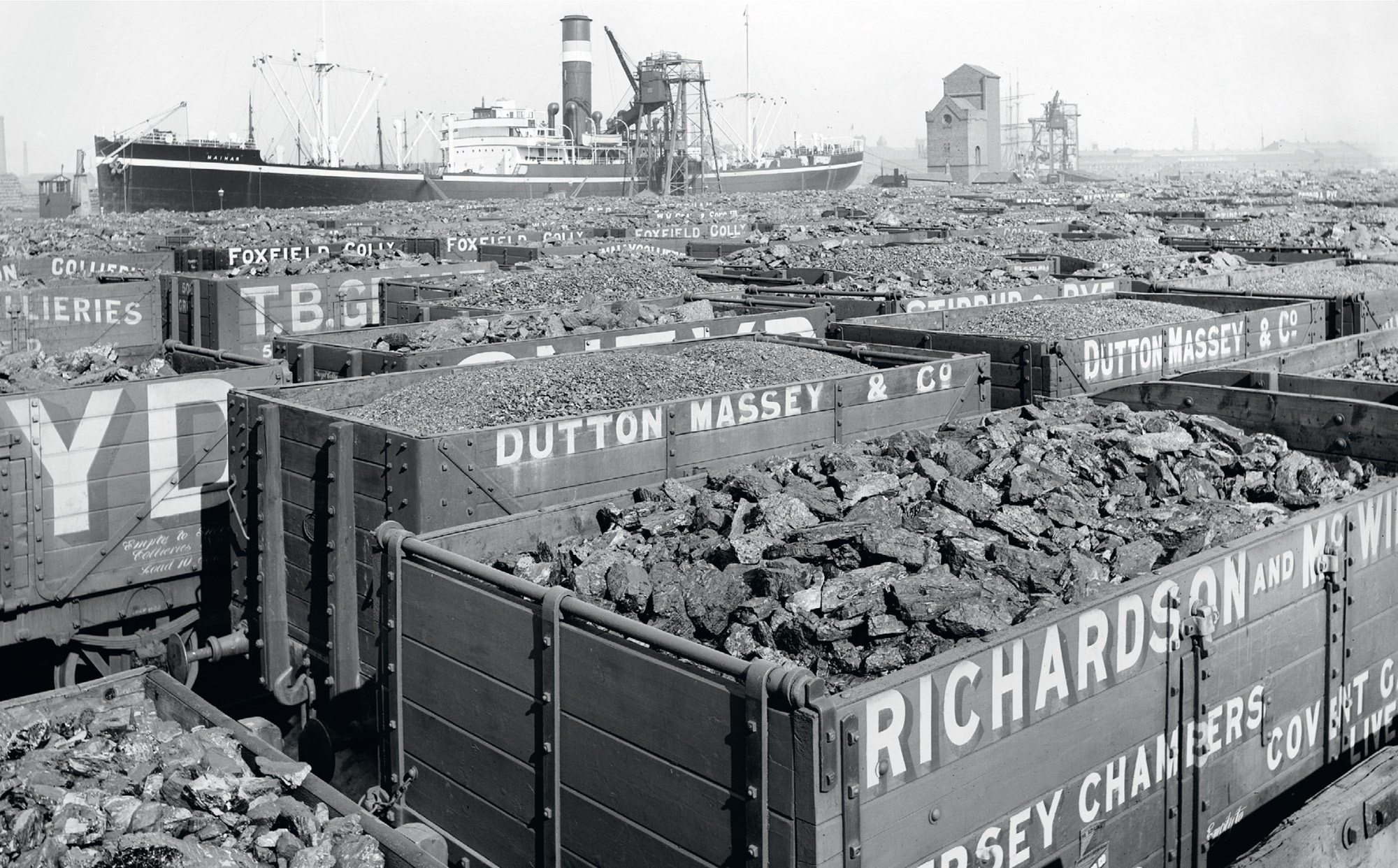
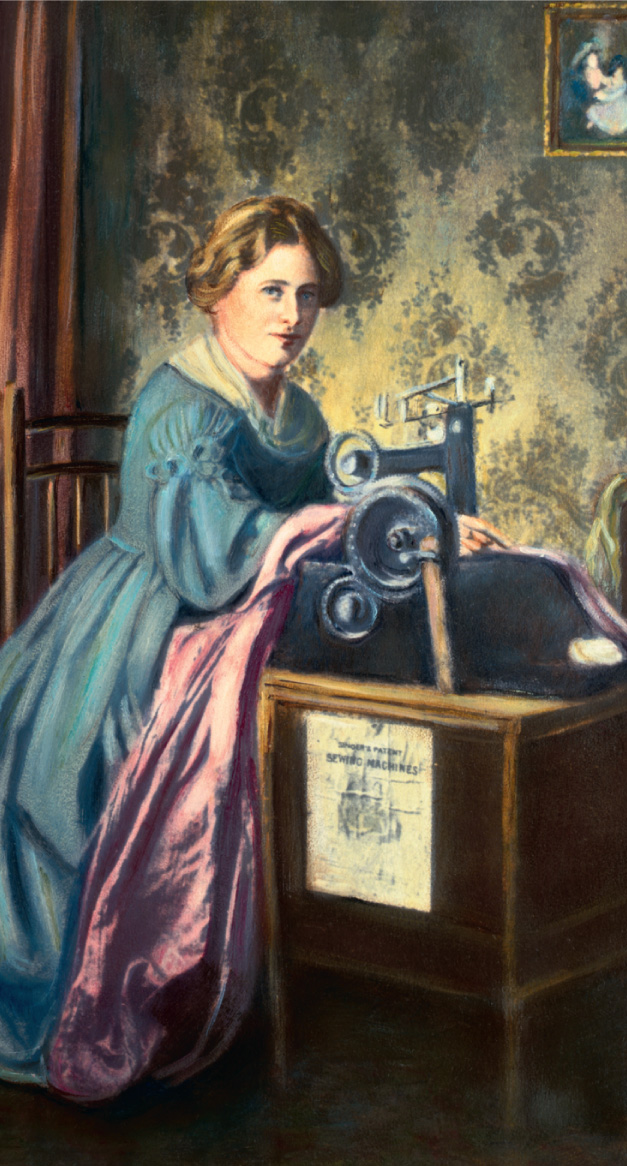
Goods in their raw form, such as milk and coal, were not the only commodities to benefit from the increased trade opportunities presented by the railways. Catalogues had been in existence from at least the fifteenth century, but it is a Welshman who is credited with creating the first mail order business as we know it today. Pryce Pryce-Jones was a draper from Newtown Powys. In 1861, utilizing the postal service and the newly created rail network, he took a rural business and globalized it.
Pryce-Jones sent catalogues to potential customers detailing his wares and took orders by post. He then dispatched the goods. In a world of internet shopping, this may seem a little cumbersome, but at the time it revolutionized retail trading. Prior to Pryce-Jones’ business model, customers had to physically set foot in a shop. One of his most renowned products, which he patented in 1876, was the euklisia rug. A forerunner to the modern sleeping bag, it was replete with an inflatable pillow. Pryce-Jones distributed them across the world, including supplying the Russian army with 60,000 units.
The globalization of consumer products was being made possible by the steam railways that were spanning continents and the steam ships that were linking them. One domestic product that has had a major impact on the world is the Singer sewing machine. Invented in 1851, this practical domestic sewing machine was directly marketed to women as a labour-saving device. Singer offered a buy or rent purchasing agreement, which allowed reluctant customers deterred by the price or other factors to pay a monthly rental that would eventually result in ownership if the instalments were sustained.
The machines sold like hot cakes, and the way the world tailored its clothes changed dramatically. In 1867, Singer established a base of operations in the United Kingdom, due to the size of its potential market. The company chose Glasgow and set up a factory in John Street – but demand quickly outweighed supply, so other factories were soon built. Construction of Singer’s third factory began in 1882 in Clydebank, Scotland, and included over two and a half miles of railway tracks. These linked the various sections of the factory and also directly connected the factory to the main line.
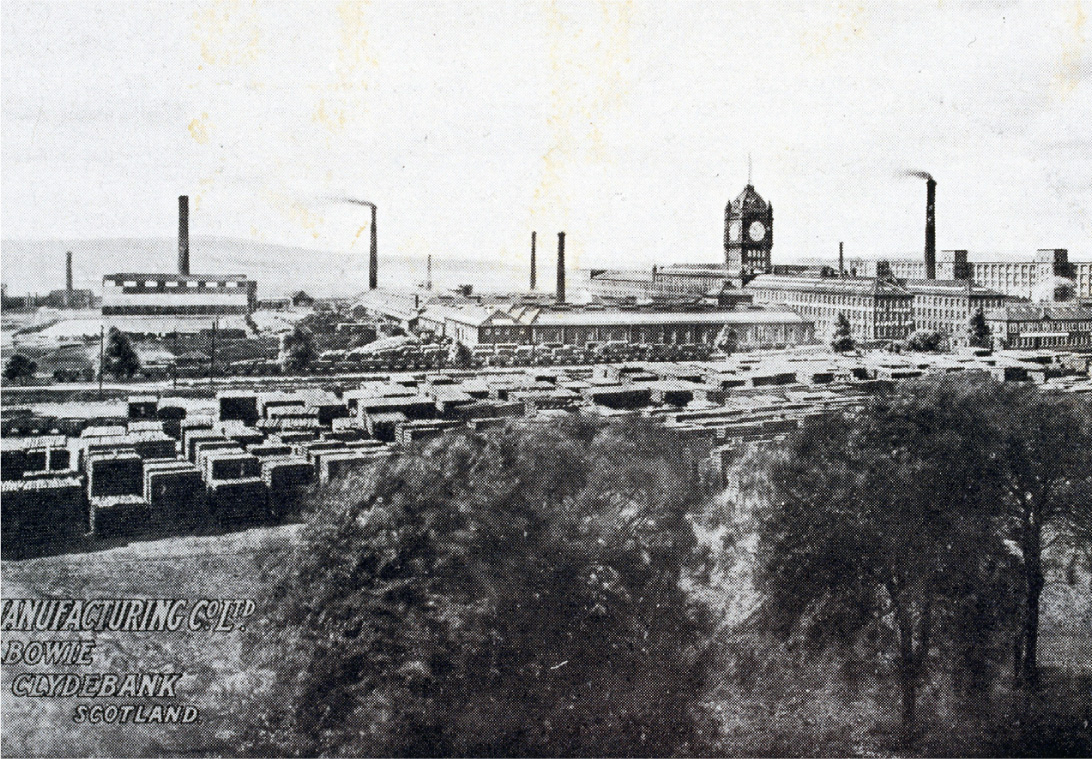
Although the factory closed in 1980 and was demolished eighteen years later, the Singer railway station, named for the company, is still in operation in the centre of Clydebank. The railway line the station sits upon was altered to build the erstwhile factory. In its heyday there were six terminal platforms, known as bay platforms, that allowed works trains to ferry in all the employees of the factory. These, like the factory, have since been removed, but the station is a reminder of the role that the railways played in facilitating an industry that was to alter the way Britain was clothed.
PASSENGER SERVICES
Very few railways in the world can operate exclusively as passenger services. They need the additional trade from goods in order to be profitable. However, up until 1852, Britain’s steam railways’ primary source of income was from trips made by passengers. The early independent train lines found it much easier to attract would-be passengers and win existing passenger business from the stagecoach companies than compete with the extensive and well-established canal network that handled much of the transportation of Britain’s goods. In 1865, the year that Charles Dickens survived the Staplehurst rail crash (an event that haunted him for the rest of his life), 252 million people travelled by train. This figure does not take into account commuter journeys and represents over ten journeys a year for every single person in Britain.
To this end, passengers have always been an important part of Britain’s railways. They represented a major source of income to the railways, but the services provided had never been attempted before. The form and function of passenger trains was another iron in the fire of invention. The very first vehicles to be pulled by steam locomotives were very similar in style to the stagecoaches that were pulled along the road, often being built by the same companies.
Stagecoach companies also offered cheaper travel to those happy to brave the elements and sit on the outside of the vehicle. In order to compete, the railways also offered similar, cheap seats. As the horse pulling coaches on iron rails gave way to steam engines doing the work, more vehicles could be added to the train. Rather than putting benches on the outside of the first-class vehicles (although some train companies at times provided seats on top of luggage vans or seats where passengers’ feet dangled over the rails), the railways created second-class wagons.
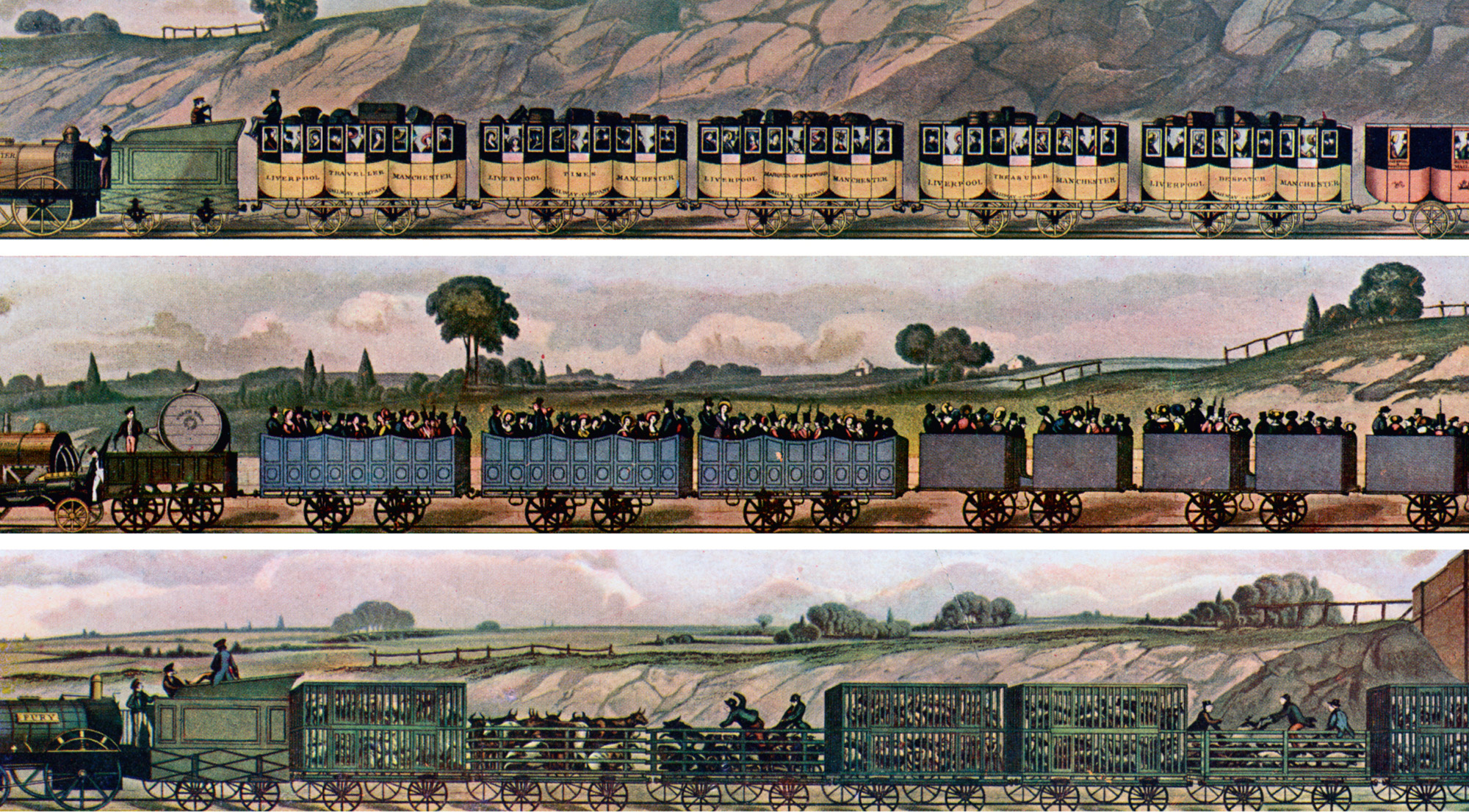
These were open wagons with benches inside and holes drilled in the floor to allow the rainwater to drain out. Occasionally a canopy might be fitted, but there were very few frills. Those who could afford it could travel in first class, those who could not or who would rather brave the elements could travel in second. Due to the sheer volume of passengers that they could transport, the railways could beat the stagecoaches that travelled by road both in price as well as speed.
There was still a large section of Britain’s society that could not afford second-class rail travel. To cater to the poorest members of society, the railways created third class. Even more basic than second, the third-class passenger experience was akin to that of travelling livestock. However, the railways now facilitated huge geographical movement across the social and cultural scale. Farm labourers could set foot in cities for the first time. Trains rumbled through urban slums, showing the few how the many lived. On station platforms and in grand terminus buildings, people from all walks of life – often dressed in clothes made on a Singer sewing machine – rubbed shoulders with one another for the first time. The railways did not care about social class. To them it was all money. First-class passengers could pay more and third-class passengers could have less. It was a situation that was unsustainable. In 1844, the railway regulation act was passed. It is colloquially called the Gladstone Act, named after the future Prime Minister William Gladstone during his tenure as president of the board of trade, which was set up under the first Railway Regulation Act in 1840.
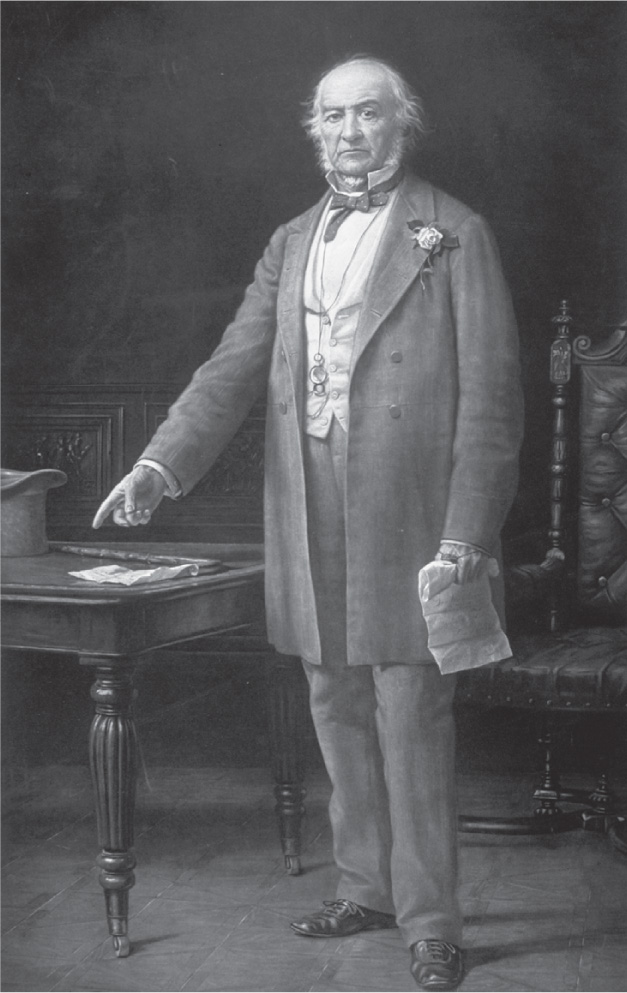
This act decreed that by law the train companies had to run what became known as ‘parliamentary trains’ once a day on each line that stopped at every station. The act fixed the price and the minimum speed and importantly required that seats and weather protection be provided. The act was passed on the back of one of the first significant rail crashes in Britain, which took place at Sonning in Berkshire in 1841.
The railway companies were fearful that if third class improved, their second-class passengers might downgrade their travel options. They were resistant to change, but by the 1870s there was considerable public pressure for improvement across the board. The board of trade had also made provisions for luggage allowances, the permitted minimum square footage per passenger, and minimum window sizes. Some companies, while begrudgingly providing parliamentary trains, circumvented basic improvements by creating a fourth class, but it was the Midland Railway that started the movement towards better conditions with their announcement in 1872 that third-class carriages would run with every service.
The Midland Railway was established in 1846 with an initial route from Leeds to London St Pancras. During the 1860s, the government had encouraged cooperation between the railways rather than conflict, with cases of one company’s train using another company’s line. It worked, but then so did competition. Following their increase in the frequency of the third-class service, the Midland Railway announced in 1875 that it would cease its second-class service. Instead, they re-designated their second-class carriages as third class and scrapped their old third-class rolling stock. They also lowered their first-class prices.
The changes were made under the company’s general manager, Sir James Allport, who wanted to attract the customers away from other lines. If Midland could not beat other companies in the speed of their journeys, they could definitely beat them in the comfort of their journeys. Like the Belgian visionary Georges Nagelmackers, who wanted to provide through services across European countries via his International Sleeping Car Company (Wagons-Lit), Allport had been to North America and travelled extensively on the Pullman coaches. He had Pullman, whom he convinced to visit Britain, to build a sleeping car for the Midland Railway which was disassembled, shipped over from America and reassembled in 1874.
Britain may not have had the continental space of North America and Europe, so long-distance luxury was not as much of an issue, but Allport was improving standards for all. His introduction of the Pullman sleeper car prompted a change to bogie wheels. The smaller wheels with bearings contained within their own axle box all in a bogie frame permitted shocks to be absorbed and forces to be minimized. His abolition of second class and major improvements of third class was adopted by most other rail companies, as was the introduction of the bogie wheels and gas or electric lighting.
The railways’ passenger services quickly became instrumental in many people’s lives. The last quarter of the nineteenth century saw population growth as well as a shift in society, with far more people working in industry and living in cities. It was a situation that led to overcrowding. One of the sweeteners that had been offered as part of the Gladstone Railway Act of 1844 was a suspension of duty on parliamentary trains. The duty was collected by the board of trade, which increasingly allowed more and more exceptions to the rule that trains had to stop at all stations.
The railway companies wanted the duty to be abolished altogether; the government wanted it to remain and be fully enforced, but they also needed to fix the overcrowded city slums. In 1883, the Cheap Trains Act was passed. This relaxed the running conditions of the 1844 parliamentary trains, but required the companies to provide low-fare workers with trains to run in the morning and evening. The idea was to allow people to move out of the centre of cities and take residence in the growing housing estates that were being built along the railway lines. Some railways, such as London, Dover & Chatham, already provided worker trains, but the act ensured that they were run at the times they were needed and the fares charged suited those who would need to use them. Overseen by the board of trade, any company not adhering to the conditions set out in the act could forfeit any and all of their duty exemptions.

When the Great Western Railway introduced the all-corridor passenger train in 1891, the experience of travelling from A to B for those who could remember the early days must have seemed like a different world. A publication called the Handy Guide was brought out to give advice and guidance to those who needed it. The first edition was printed in 1862, and the guide was very similar to a cross between a travel guide and the late twentieth century ‘For Dummies’ guides, which were brought out to aid those wishing to use the internet. The Handy Guide is not to be confused with the guides that were published containing all the timetable and fare information.
The Handy Guide instructs the reader how to prepare for a journey, what to expect, how to dress, how to deal with the toilet facilities or lack of (toilets took up space that could be given over to paying passengers), how to muse, how to sleep, how not to get taken for a ride by strangers with playing cards – in fact, it covered pretty much everything. When you consider that trains were a new entity for many – and that without corridors the compartment that one entered was akin to a cell for the remainder of the journey – I imagine that the Handy Guide was seen by many to be absolutely essential. However, the passengers were not alone. Railway personnel such as station masters and train guards were always on hand to look after them.
THE GROUPING
If the nineteenth century witnessed how the railways were born and grew, the twentieth century would see how they would live. During the nineteenth century, the railways had played a part in huge social change in the UK and across the globe. They had made the world a smaller place and consequently there was no longer room for all of the numerous railway companies that had appeared. When Britain was engaged in the First World War, the railways fell under national control. The Great War affected the whole of British society. Once the conflict was finally over, the hierarchies of Victorian and Edwardian society broke down, unable to re-establish themselves after the universal blood sacrifice. The groundwork for a new social order had been laid and changes were going to be made.

While the railways were under national control, it had become apparent that there was no need for well over 100 railway companies (by one count there were 178 railway companies), each one with its own management hierarchy and infrastructure, such as locomotive works. A man who had become a prominent figure during the Great War as someone who could find solutions to problems and get things done – such as accelerating small arms production or filling shells with explosives – was Eric Campbell Geddes. In 1919, he was appointed as Britain’s first Minister of Transport to look after the roads, canals, docks and, perhaps most importantly, the railways. He was overseeing the handing back of control from the state to the companies.
By this time, the railways were not in great shape financially. They were owed large sums of money from the government for the operating costs incurred during the war, which the government was both slow and reluctant to pay. Furthermore, following a national strike by railway staff in 1919, hours and pay were altered in favour of the workers, leading to greater overheads for the companies. Many companies struggled to survive in the years directly following the war.
There was an argument for the nationalization of the railways that echoed the sentiments of a young William Gladstone in the 1830s. However, Geddes was against this seminal move, as he believed it would lead to bad management. Instead he wrote a White Paper proposing the amalgamation of many of the existing companies. The idea of amalgamation had first been proposed in the 1850s, but had never come to fruition.
The railways moved out of government control on 15 August 1921 and four days later the Railways Act was passed. It is known as ‘The Grouping’ and it commenced in January 1923. Geddes had proposed that five or six companies be formed, but after careful deliberation the existing rail companies were grouped into ‘the Big Four of the New Railway Era’, as the Railway Magazine put it in their February issue.
RAILWAYS AND WAR
In my parents’ house there is a small painting of a makeshift building in Surrey. It was to here that my great-grandfather was relocated along with his colleagues during the Second World War, when he was working in the offices of Southern Railways at Waterloo station. Having served in the Great War, he was enlisted in the home guard and their unit was tasked with the protection of a railway tunnel.
The wars had such a major impact on the railways, ultimately pathing the way to their nationalization and partial demise. However, as the saying goes, ‘you reap what you sow’. Between 1850 and 1945, railways played a significant part in all major conflicts, helping to alter the theatre of war. Railways were good for moving heavy objects and lots of people over large distances very quickly. The best of the navvies who built the railways could shift 20 tons of soil each in a day. During the creation of what is called the ‘permanent way’, temporary track was laid to help with construction. All these factors point to one conclusion; railways can be created quickly to escalate the scale of a conflict.
The first war to witness a major impact from the railways was the American civil war. The railways had been a part of the Crimean war (1854–56) and the Italian war of liberation (1859), but in those cases they were simply used to move supplies and casualties. The American civil war (1861–65) saw the first battle won by the use of the railways to move troops. This was the battle of Bull Run (1862), which resulted in a confederate victory. Military historians have argued that had the battle gone the other way, the American civil war may have been altogether a much shorter affair.
The three wars waged by Prussia between 1865 and 1870 and the Boxer Rising in China in 1900 all saw use of railways, but the zenith of railways being used in the theatre of conflict was during the First World War (1914–18). In 1916, Britain and her allies were on the verge of losing the ‘war to end all wars’. Horses and trucks were not sufficient to supply troops at the front. Something had to be done, and it came in the form of the British Light Railway. Thought to have been influenced by the Ffestiniog railway in Wales, a network of narrow gauge railway was created to aid the trenches and allow the allied powers to adapt to changes in the battlefield.
At its peak, the British Light Railway moved 210,000 tons of goods a week. There were 1,224 British locomotives sent to France and Italy for war service, and as many as 687 locomotives in total operated on the British Light Railway. These engines were either British- or American-made and, although most of them were steam driven, many were petrol powered. Indeed, even model T Ford cars were converted for use on the railways during the war.
The railways were not just confined to the western front. 625 miles of standard gauge and 128 miles of narrow gauge railway was built in the middle eastern war zone. When war ended on 11 November 1818, the British, Indian and American railways had supplied and laid 4,000 miles of standard gauge track, 878 miles of metre gauge track and 4,346 miles of narrow gauge track. In total, around 2,000 locomotives and 80,000 carriages had been used across all the gauges.
The Second World War also utilized railways, but they were not as crucial to troop movements and supplies as they had been in the Great War. The conflict, certainly in Europe, was far more mobile, with improved movement by road vehicles and advancements in aircrafts. However, the railways remained very important. During bombing raids in Britain, locomotives were not specifically sought out as targets and relatively few were destroyed. The main targets were the actual lines of communication. To destroy a railway line meant a disruption in the flow of munitions, troops and supplies. It was also the railways that helped shift 750,000 tons of rubble generated by the blitz in a five-month period, to be used as hardcore for runways and aircraft hangars.
The Big Four were Great Western Railway (the only company to retain a name that had previously been in existence), London, Midland and Scottish Railway, London and North Eastern Railway, and Southern Railway. They included most of the companies and troubles ensued during the bedding in period. Rivals had to work side by side, routes had to be prioritized, managers found themselves sidelined, often answering to their competitors, and engineering traditions had to be agreed. It took time, but afterwards the big four became icons during the pinnacle age of steam railways.
Not all companies were included in the grouping. Electric railways such as the London Underground and its associated lines, joint railways and many small gauge or light railways were left out, but the majority of track miles were now under the control of four companies. Geddes, whose austerity policy to regulate national expenditure had failed, resigned from politics in 1922. One proposal he had made in his paper, which had gained support from the Labour Party, was the greater involvement of workers at a boardroom level. This was not included in the final act, but unprecedented provisions were made for collective negotiations and bargaining between the companies and the trade unions.
Of the Big Four, only Southern Railway received the majority of its revenue from passengers. It embarked upon a scheme of electrification via a third rail, which made sense due to the many densely populated areas that the railway travelled through. It also meant that trains carrying commuters did not have to be fired up each day and kept warm each night. Perhaps because the railway was so reliant on passengers – mainly commuters, but often holiday makers or those wishing to travel abroad via ship – it was the first railway company to have an in-house PR department. Southern Railway’s reliance on passengers, its savvy use of public relations, its advertising campaigns such as ‘Live in Kent and be Content’ and its policy of electrification, meant that when Britain sank into the Great Depression in 1929, Southern Railway fared especially well in comparison to the other three companies.
GWR, LNER, and LMS all relied heavily on their goods trade – especially the transportation of coal. The Great Depression primarily affected industry, and these three companies suffered the effects. Rather than dwell on the negatives, or indeed allow the public a glimpse behind the curtain at the ‘warts and all’ economic situation, the railway companies chose to focus on select services and promote them as their public face. The Big Four competed with each other (often not directly), trying to offer greater modernity, speed and comfort. All the railways were aware of the threats posed by the increased traffic on the roads. Ultimately it meant that the whole situation generated an era of truly iconic steam trains.

One of the most famous locomotives of all is the Mallard. Its place in history will forever be assured. This is because it holds the record for the fastest speed set by a steam locomotive, clocking in at 125.8mph. The Mallard was an A4 class Pacific designed by Sir Nigel Gresley (who turned his moat over to a breeding ground for wild ducks). The A4s are instantly recognizable, due to their art-deco-esque streamlining, and Gresley built them for speed. The thirty-five A4s that were built were for use on LNER’s east coast mainline, which linked Edinburgh and London. The LNER ran a non-stop train service on this route, which was known as the Flying Scotsman.
The Flying Scotsman service competed with the LMS’ non-stop Royal Scot service, which ran on the west coast mainline between London Euston and Glasgow Central. Each company tried to beat the other in terms of timetabled speed, a rivalry that had started before the grouping as the ‘Race to the North’. Speed has always been an important factor with the railways, ever since Stephenson misled parliament in 1825.
THE FLYING SCOTSMAN
Flying Scotsman was built in 1923 as an A1 class locomotive and was named for the east coast passenger service that she was intended to pull. Over the years, Flying Scotsman was improved and in time became an A3 class. To distinguish between the locomotive and the service, the engine is called Flying Scotsman and the service is called The Flying Scotsman.
When the death knell was sounded for steam in 1955, with a complete ban on all steam on the mainline coming into force in 1968, the iconic locomotives faced the scrap yard. Although there had been some steam preservation in operation, this was the catalyst for the steam preservation movement we know today. Flying Scotsman’s date with the scrapyard was announced in 1962.
Recently voted the world’s most famous locomotive, Flying Scotsman’s fame has been accumulated over the years. Although it gained much popularity during operation – especially after a number of film appearances – many of the events it undertook during preservation have helped elevate Flying Scotsman to a unique level in the national consciousness. As part of the acquisition deal that Alan Pegler negotiated when he bought the locomotive from British Railways, it became the only engine that was exempt from the mainline steam ban.

Flying Scotsman has had an interesting retirement. She has toured America, promoting British industry, been mothballed in an army base, been through the Panama Canal and crossed Australia. In 2004, she was acquired by the National Railway Museum based in York and has been given a complete overhaul. We were lucky enough to see how the team gets her into steam.
These engines always had a fire of some description burning in them while they were working and only ever got cold when they were due a trip to the steam works for an overhaul. However, preserved engines do not work every day. As Alex and I climbed into the firebox to check the lead plugs and the metal around the stay bolts, it had been three days since Flying Scotsman had last been in steam. The fabric was still warm to the touch and I was surprised at how large the firebox was, with enough room for us to stand up.
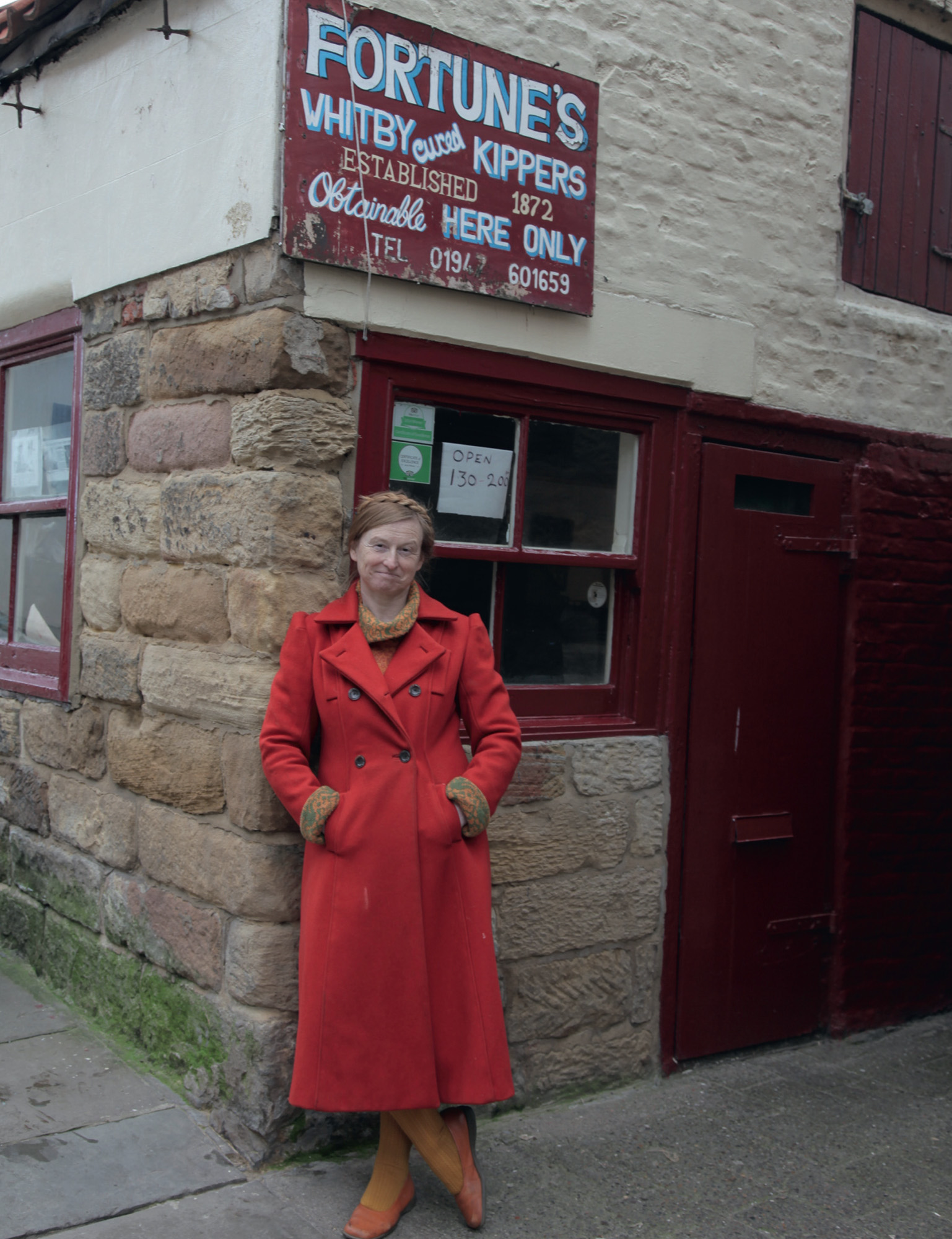
When the LNER introduced their Flying Scotsman service in 1928, they initially pulled it with class A1 locomotives, the first of which was called Great Northern and the most well known is Flying Scotsman. The A1s were equipped with corridor tenders that allowed the crew of driver and fireman to be swapped mid-run and facilitated the non-stop service. In time, the A1s were rebuilt mostly to A3 specifications, with a higher-pressure boiler and increased superheating surface.
These two classes, also designed by Gresley, represented the design path of the A4s. Gresley believed in horses for courses, and when he designed and built locomotives he had their role and their routes in mind. It has been said that some people could tell their geographical location on the railways based on the smell of the coal being used. Coals from different areas of the country (and the world) have different properties. Some burn better than others, some are fierce, some are steady. Welsh coal is very good for steam and had a significant impact on the Great Western Railway’s locomotive performance. Softer coals produce large amounts of soot and smoke. The more impurities that go up the chimney mean the less energy that is being released from the mineral. Nigel Gresley and his assistant Oliver Bulleid built the A4s to efficiently consume coal from the Kent coalfield, which was some of the softest in use. This meant that when they ran on other coals, such as those typically used in speed tests, the A4s were geared up to extract as much calorific value from the coal as possible.
The Mallard set the speed record on 3 July 1938, with 61-year-old Joseph Duddington at the controls alongside his fireman, Thomas Bray. The line was limited to 90mph and the train had to slow for a junction at Essendine. Those involved in the successful record attempt believed that the A4 locomotives could achieve a higher speed and Gresley planned to try again. However, the scheduled attempt was called off when Britain went to war for a second time in many people’s lives.
The Second World War again brought the rail companies together to work as a single entity. After the war ended, Clement Attlee’s government nationalized the railways, along with road freight and canals, under the British Transport Commission. The commission appointed executives for each of the sectors and the one responsible for the trains traded as British Railways. Much of the rail infrastructure was damaged during bombing raids in the war, but it was nowhere near as bad as the destruction of the other railways in western Europe. This served as a disadvantage, because the railways of continental Europe could more or less be built from scratch, but the railways of Britain had to be repaired.
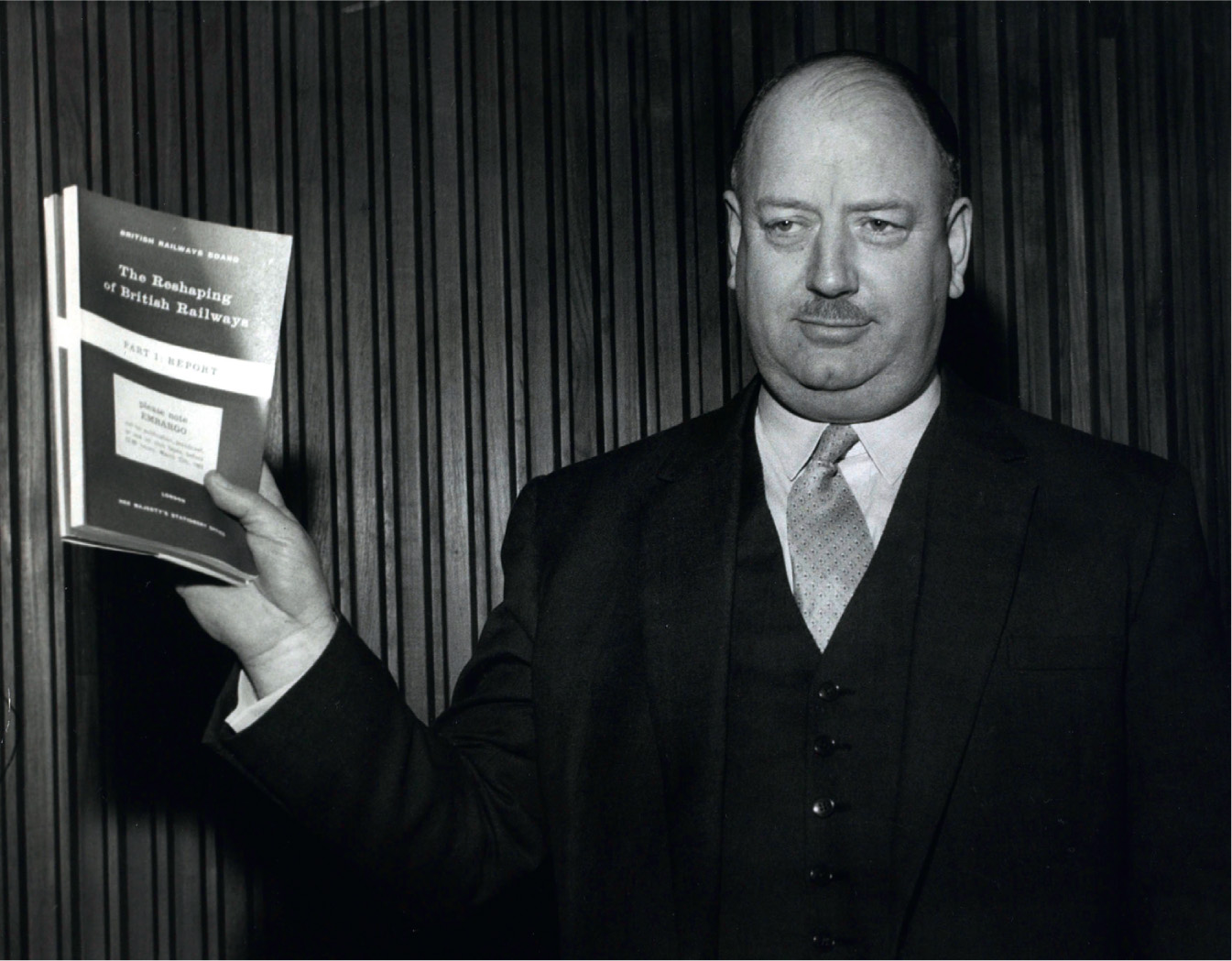
The Great War, the Great Depression, the Second World War and the continuing austerity measures that Britain lived under until the mid-1950s all meant that the railways suffered. The British transport commission was in serious financial trouble due to the railways, which had a huge and growing financial deficit. Consequently, the decision was made to abolish it and separate out the various entities. In 1963, the railways collectively became the British Railways Board, which from 1965 was known as British Rail.
The last chairman of the British transport commission from 1961–1963 and the first chairman of the British Railways Board from 1963–1965 was the infamous Dr Beeching. Working for ICI, he took a five-year leave of absence in order to take up his position with the British Railways Board. His job was simple; quickly sort out the huge problems that the railways were having and make them profitable. He did this via two reports. The first was called The Reshaping of British Railways and the second was called The Development of the Major Railway Trunk Routes.
Beeching’s reports were based upon his studies of the operations of Britain’s railways. Many branch and spur lines ran regular services but carried very little passenger traffic. Beeching also fundamentally believed that there was too much duplication of routes on the railways, which may well have been a hang up from all the competing railway companies building lines in the same territory when the railways were first created. Ultimately, something had to be done. The cuts that Beeching proposed affected many of the small communities which one hundred years previously had been put on the map by the railways. The doctor was mindful that one in nine families now owned a car and road travel would only become more prolific. If both his reports had been fully accepted by the government, then Britain’s railways would now be a complete shadow of their former selves.
ROAD VERSUS RAIL
It is a common misconception that the motor car sounded the death knell of the steam train or indeed destroyed the railways. Our rail network is still one of the most extensive and well used to be found anywhere in the world – and almost all of that infrastructure was put in place in some form or another in the nineteenth century.
It is true that steam became outdated. As a source of motive power it was inefficient and had to go – and in the final analysis its demise was brutal and absolute. In hindsight, a more gradual phasing out of steam and a slower introduction of diesel-powered engines would have been more appropriate. It was not the car that replaced steam railways, but rather the internal combustion engine.
The car certainly had an impact on the railways, in a similar way that the railways affected the canals and the stagecoach companies many decades earlier. However, many of the freight companies that took goods by road were owned, at least in part, by the railways. It is fair to say that the railways adopted roads as a means of transporting freight early in their history. The charters the railways were bound by meant that transporting a huge variety of items across a network operated by a number of companies was made easier if some of the journeys between stations were completed by road. This meant that the railways employed a large number of horses and carts – and later on, trucks – to help move goods.
The first real challenge to the railways by road came just after the First World War. The railways had been nationalized and operated under austerity measures during the war. The Great Depression and the Second World War were about to follow, accompanied by a continuation of austerity well into the 1950s. Immediately after the First World War, there was a surplus of trucks in Britain, along with a more established infrastructure for refuelling and general motoring. This prevailing situation led to the railways having to compete with lots of ‘man and van’ companies that had no real overheads to speak of. Additionally, as the railways had to publish their charges for freight, it was easy to undercut them on price.
During the twentieth century, numerous roads were built and improved, cars and trucks became more readily available, and a nationwide network of fuel stations was created. The car took off, and steam essentially came to an end. However, in actual fact the railways are still doing well, with many proposals on the table for the reinstatement of some of the closed branch lines. Of course, cars are very convenient, but when it comes to travel across Britain – especially when travelling between the centres of two cities – nothing beats the railways.
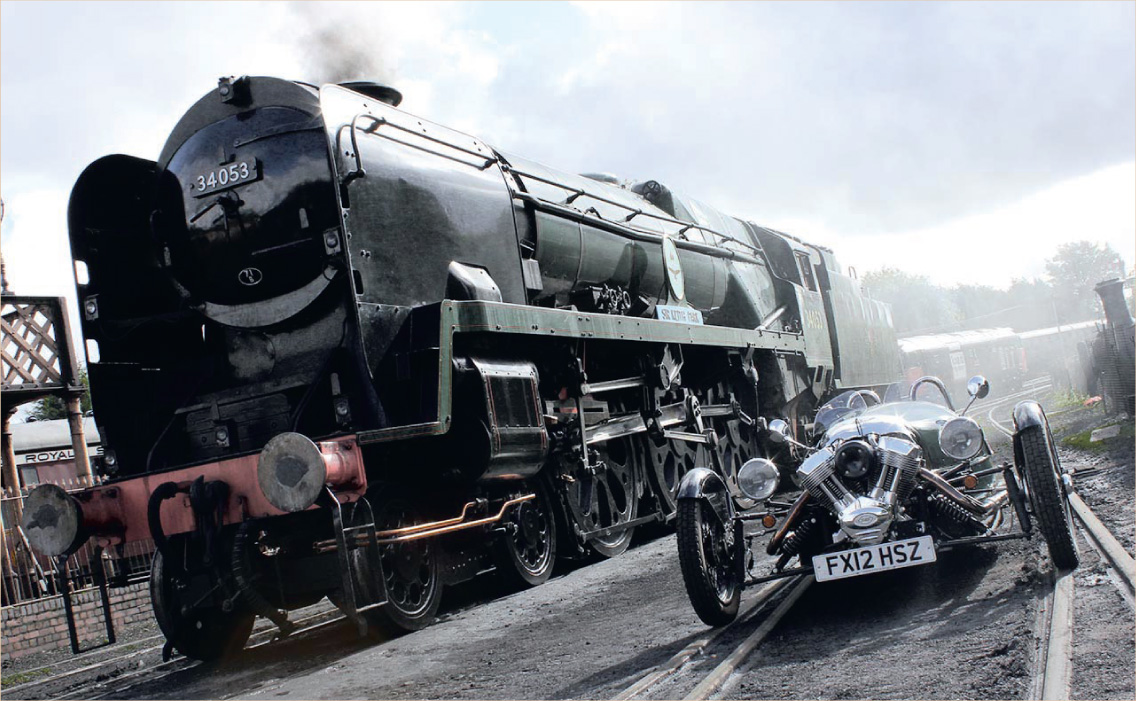

Thankfully, the cuts were not as drastic as they could have been. Some lines managed to reopen, and those routes – such as what is now known as the heart of Wales line, which passed through a number of marginal constituencies or carried profitable freight – were spared. Dr Richard Beeching is often seen as the villain in the whole process, but he had a job to do. Many of the problems faced by British Rail, the building of huge marshalling yards to handle declining freight (Beeching recommended a system which would become ‘Freightliner’), and the decision to completely phase out steam came from the 1955 modernization plan.
The plan was not a success and paved the way for drastic action by Beeching. It did, however, successfully end steam while it was still a reliable and efficient form of locomotive power. The last mainline passenger train to be pulled by steam on British railways was the Fifteen Guinea Special on 11 August 1968. The following day there was a ban on steam on Britain’s standard gauge railways.
The railways were forged from visions and ambition. They were born out of competition and ultimately had to make money. They changed the world and the world changed them. Perhaps if there had been a grouping or a nationalization of the railways at a much earlier date, then competition from the roads and the air and the duplication of routes and services may not have been such an issue. However, it was those pioneering companies going head to head that gave us the rail network we have today. The railways may have lost out on trade in the twentieth century, but it was the railways that made it possible for many companies to extensively trade in the first place. At the start of the nineteenth century no one knew what the railways were going to look like; however, 200 years later I think they actually look pretty damn good.